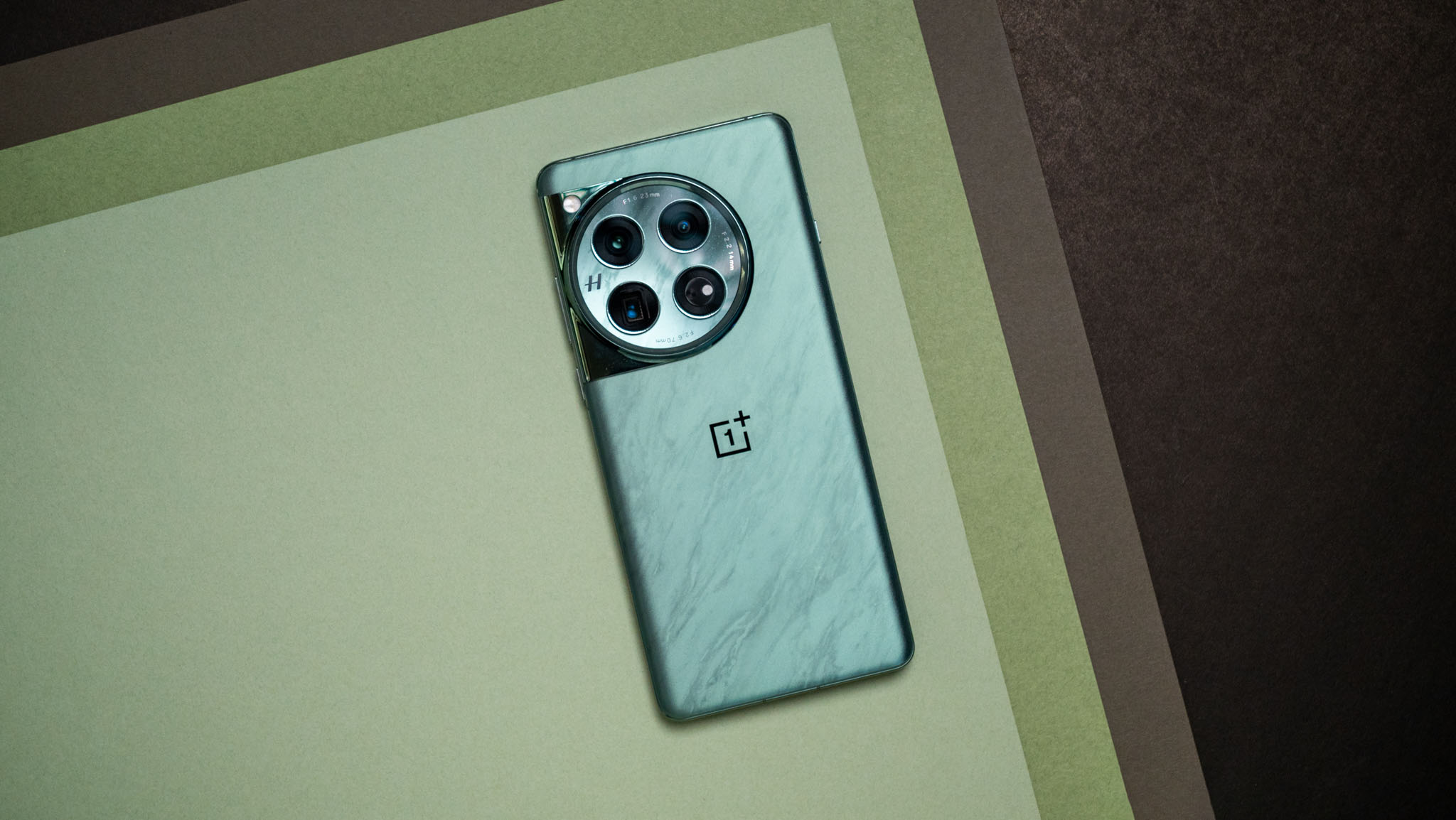
OnePlus had a stellar 2023 on the back of the OnePlus 11 and OnePlus Open, and while these devices garnered most of the attention, the Chinese manufacturer had several smaller victories — it introduced a new QLED TV, rolled out notable upgrades to its mid-range Nord portfolio, and managed to launch a mechanical keyboard.
OnePlus is looking to build on that momentum with the OnePlus 12. The phone doesn't deviate too much from last year in terms of design, but you get subtle modifications that make it a look a little more polished, a new AMOLED panel that's among the brightest of any phone today, upgraded cameras that take better photos, and a larger battery that lasts noticeably longer. Oh, and wireless charging is back — this is a Pro model in all but name.
Clearly, there's a lot to like with the phone, but the rest of the field is also touting enticing upgrades this year; Samsung went all-in on AI with the Galaxy S24 series, the Xiaomi 14 series has standout cameras, and the Pixel 8 Pro continues to deliver the best overall experience on Android, even if the hardware isn't quite on par with other devices.
And for all the changes OnePlus made on the hardware side of things, the software itself is still the same, and it continues to have its share of issues. That's about the only negative here, and overall, the device has what it takes to go up against the best that this segment has to offer.
The Chinese manufacturer has been building up to this over the last four years, and in the OnePlus 12, it finally has a phone that lives up to the Never Settle moniker.
OnePlus 12: Price and release date
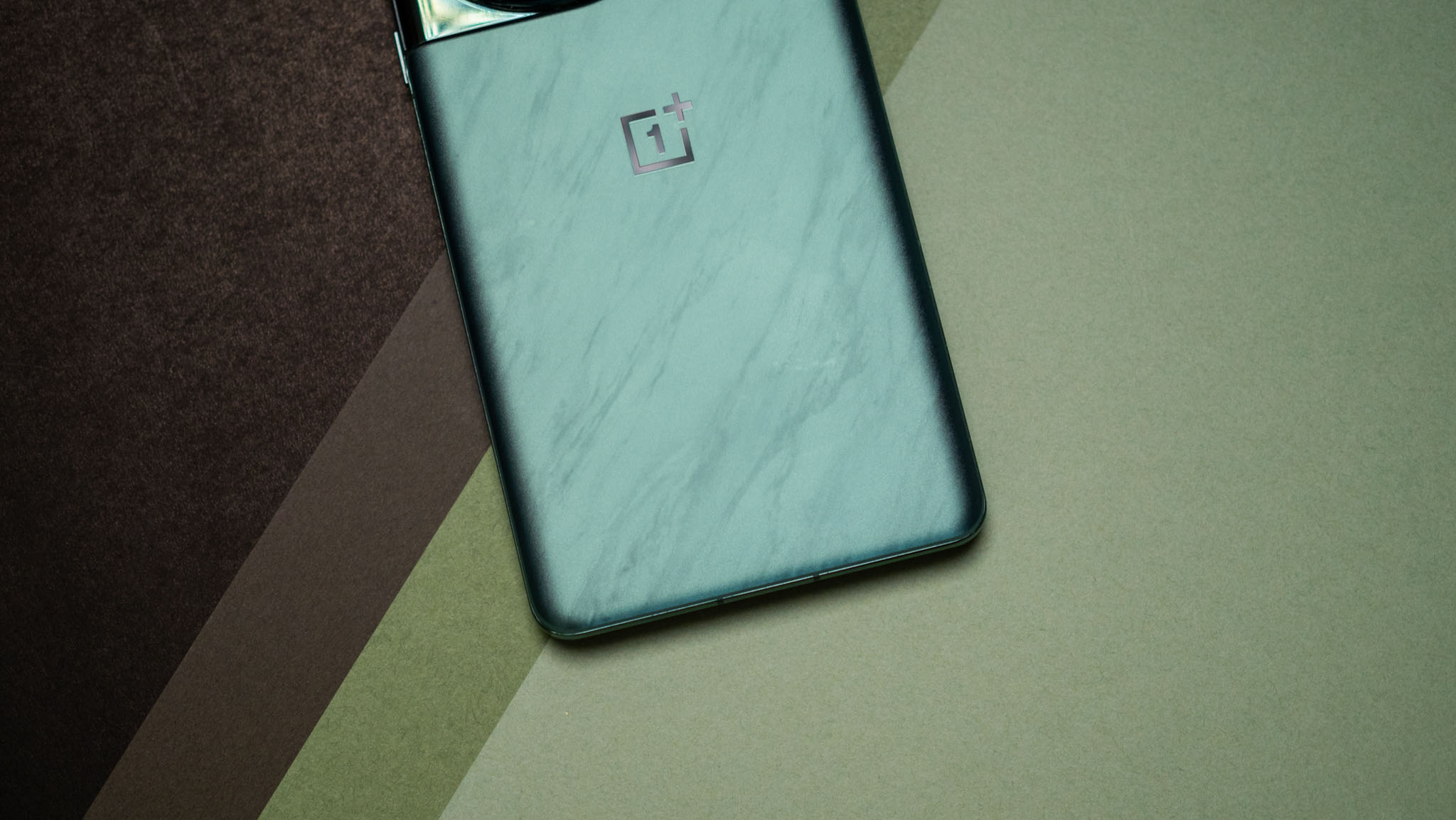
OnePlus unveiled the OnePlus 12 in China at the end of last year, and the device made its global debut at a launch event in New Delhi, India, on January 23, 2024. OnePlus also introduced the OnePlus 12R alongside the standard model, and this time, it will be available globally.
The OnePlus 12 is sold in two variants: the base model has 12GB of RAM and 256GB of storage, and there's a 16GB/512GB model available — this is the one I'm using. OnePlus sells a 24GB/1TB version in China, but that particular model isn't debuting globally. This is what the device costs globally:
- OnePlus 12 (12GB/256GB): $799 / ₹65,999
- OnePlus 12 (16GB/512GB): $899 / ₹69,999
Even though the OnePlus 12 costs $100 more than the OnePlus 11, you're basically getting double the amount of base storage as last year, so when you account for that, there's no change in the asking price. Similarly, the phone costs ₹9,000 ($108) more than its predecessor in India, but that goes down to ₹3,000 ($36) when you factor in the 256GB version of the OnePlus 11 debuted for last year.
OnePlus is also introducing the OnePlus 12R alongside the OnePlus 12, with that device also debuting in global markets this year. The 12R will be available a little later, and it retails for $569 in the U.S. and ₹39,999 ($481) in India, a terrific value.
OnePlus 12: Design
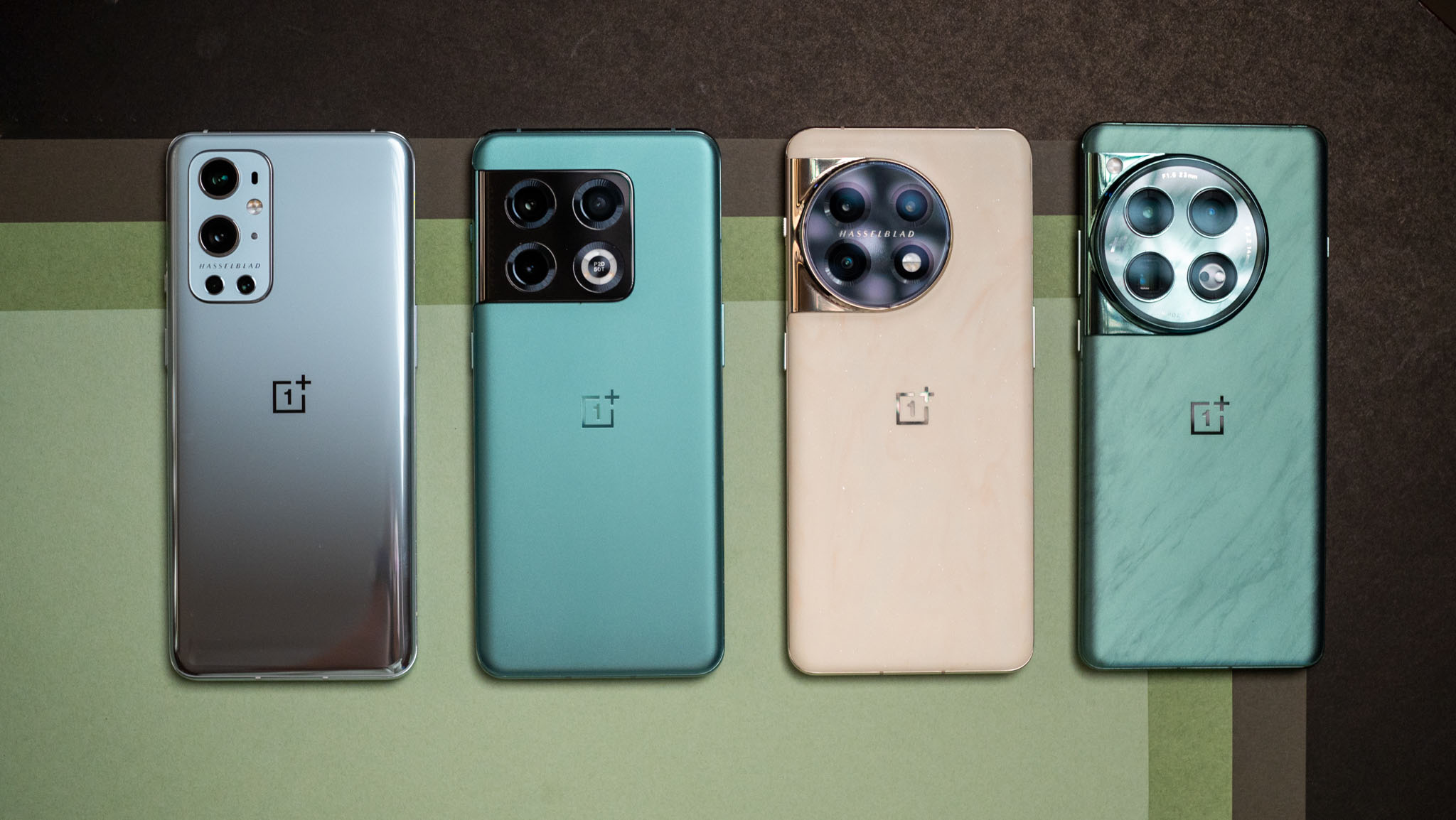
OnePlus has a unique design aesthetic, and the manufacturer deserves credit for continually refining the design language with every new release. The OnePlus 12 looks nearly identical to its predecessor, with both phones sharing a similar camera island at the back that seamlessly blends into the mid-frame. Even going back to the OnePlus 9 Pro, you can make out design similarities; it has the same rounded edges and smooth curves along the sides.
That said, there are minute differences in the design; the OnePlus 12 is a smidgen taller and wider, and at 9.2mm, it is noticeably thicker than the OnePlus 11 (8.5mm). The phone is heavier as well, coming in at 220g (versus 205g), and this is down to the larger 5400mAh battery. While the phone is larger and heavier, it still feels great to hold and use, and the weight distribution is ideal — there are zero issues in that area. The phone doesn't wobble when using it on a flat surface either.
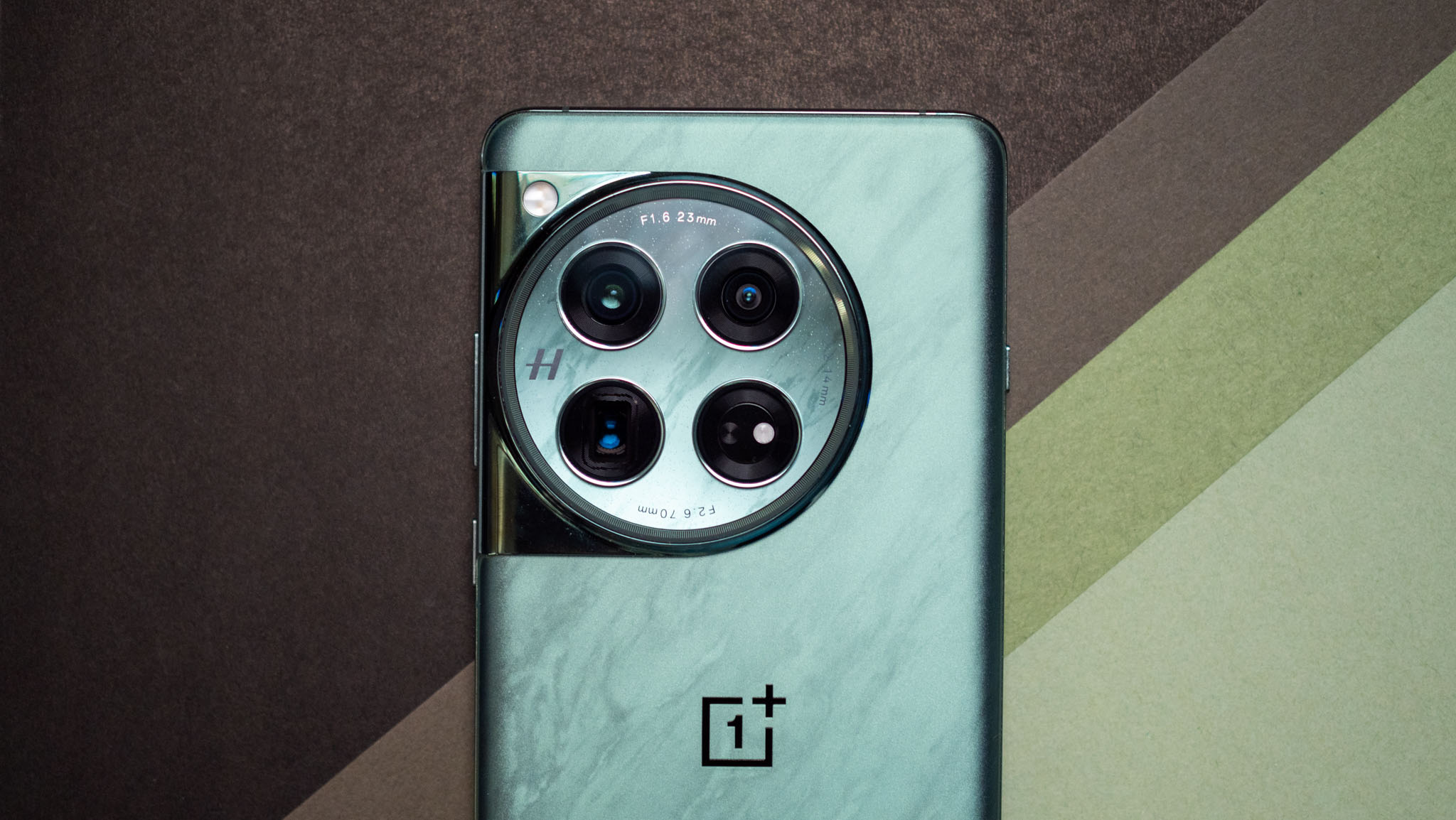
Obviously, the big talking point is the camera housing at the back, and it looks striking — even more so than previous years. This time, it uses the same color as the rest of the back, and the Flowy Emerald colorway does a great job accentuating the module. It's encircled by a steel ring, and I like the way it merges smoothly to the sides.
Another change is that each of the camera modules are ensconced in individual rings, and this goes a long way in making the design of the housing look that much more premium. The Hasselblad branding is now just a stylized H, and again, it ensures the camera island isn't too busy, and that ultimately allows the phone to stand out.
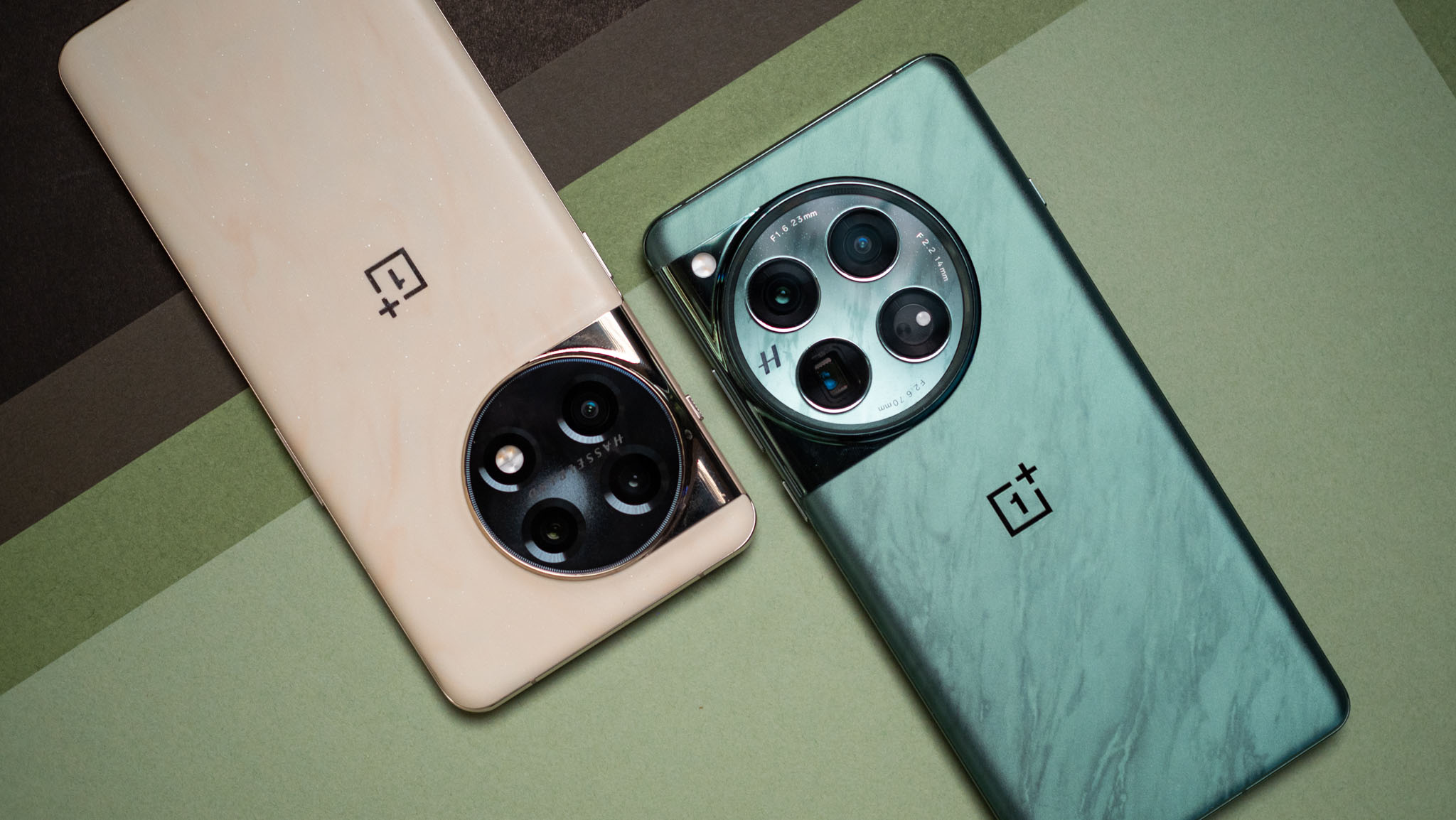
The color option also plays a big part in this, and the Flowy Emerald variant in particular looks amazing. It has a unique texture that's etched onto the glass back, and it looks every bit as distinctive as the OnePlus 11 Marble Odyssey variant that was released last year. The satin texture is wonderful, and it doesn't quite feel like you're using a glass-backed phone. Regardless, it has a standard glass panel that's protected by a layer of Gorilla Glass 5.
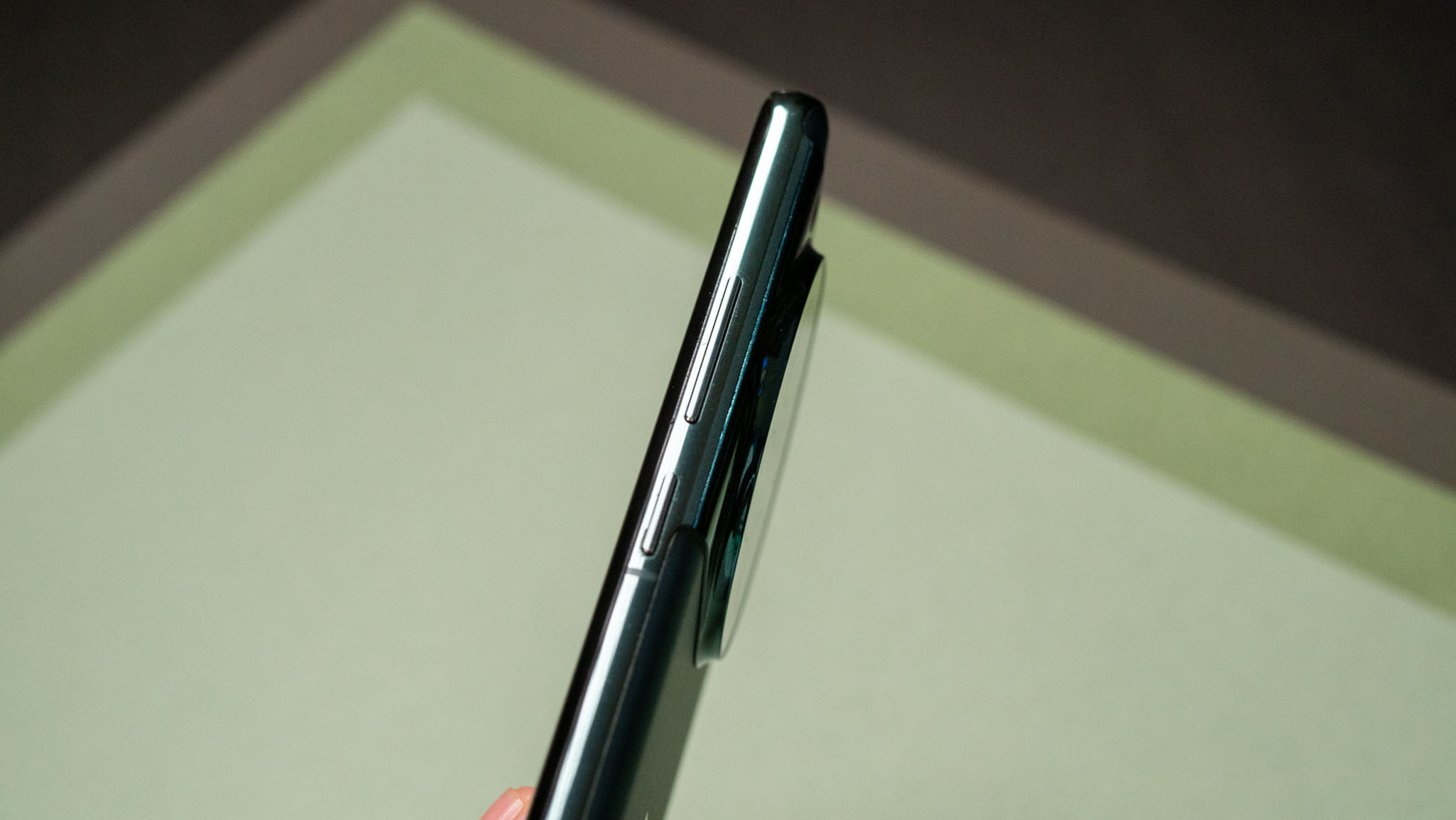
If you don't like the color, the phone is also available in a Cool Blue model and a standard black variant. The sides of the Flowy Emerald model have a glossy coat, and if you're keen on a matte texture, you'll need to get the black version.
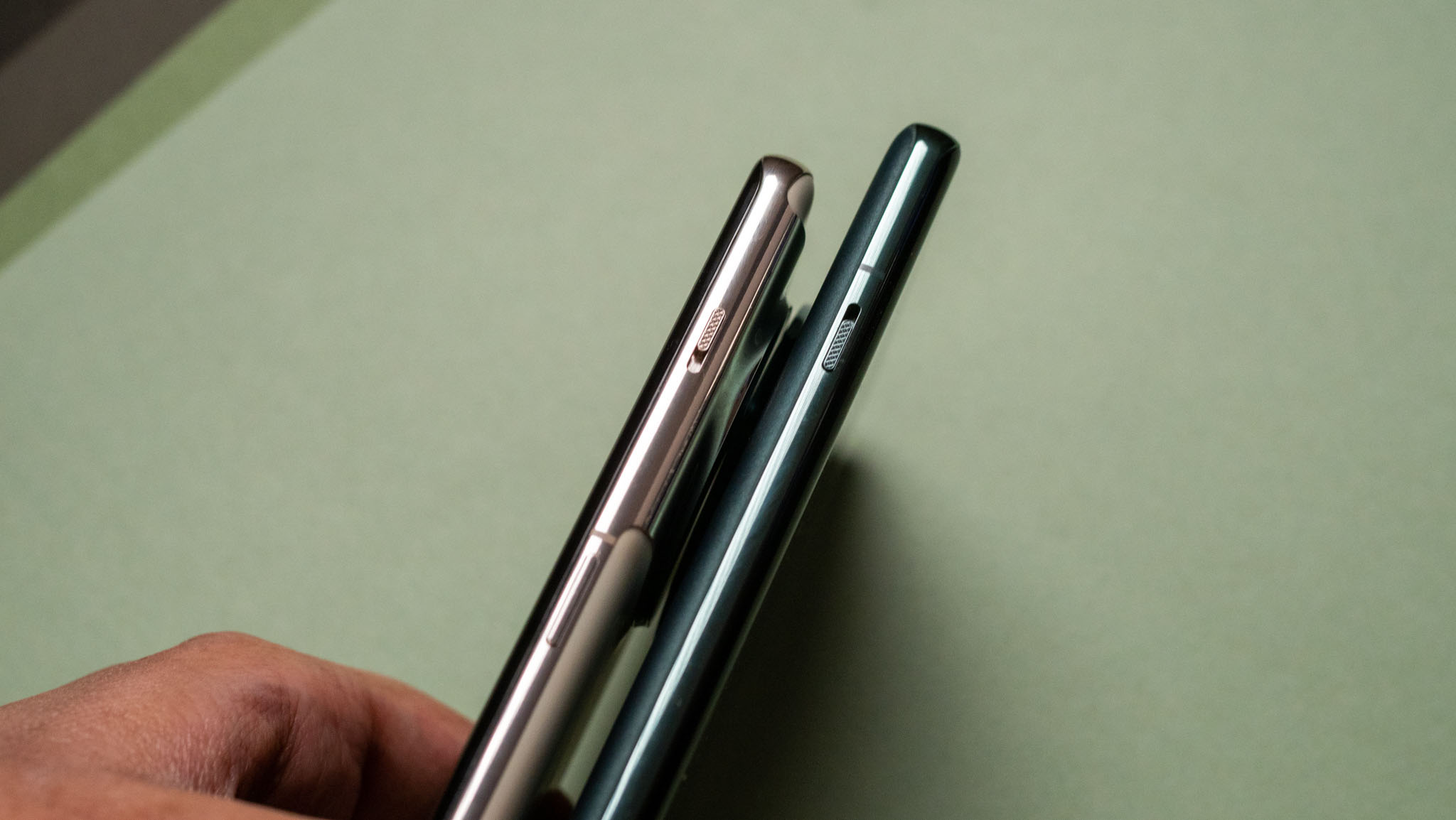
The alert slider is intact, but it has been moved to the left of the screen this time. The justification is that the earlier location interfered with the antennae design, but the volume rocker is now situated in that area, so I don't really know how it makes a difference regarding antennae signal. Anyway, the move doesn't affect usability in any way, and I'm just glad that the alert slider continues to be available.
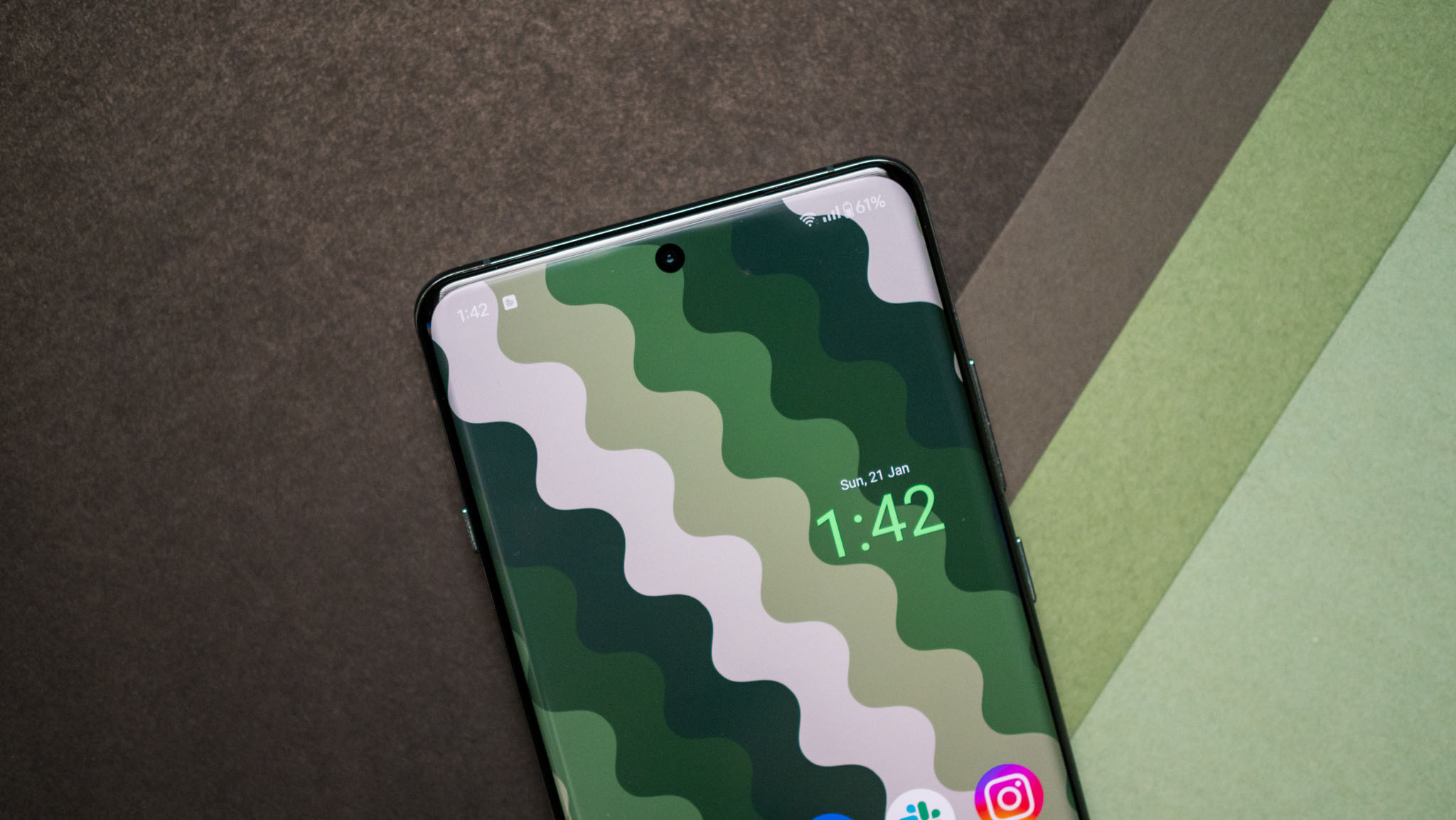
What I do like is the fact that the selfie camera cutout is now centered — it's almost as if someone at OnePlus looked at every other Android phone and decided it was doing it wrong. What's more likely is that the new BOE panel that was sourced this year had the provision for the module in the center (unlike previous years), and this again brings the device on par with the rest of the field.
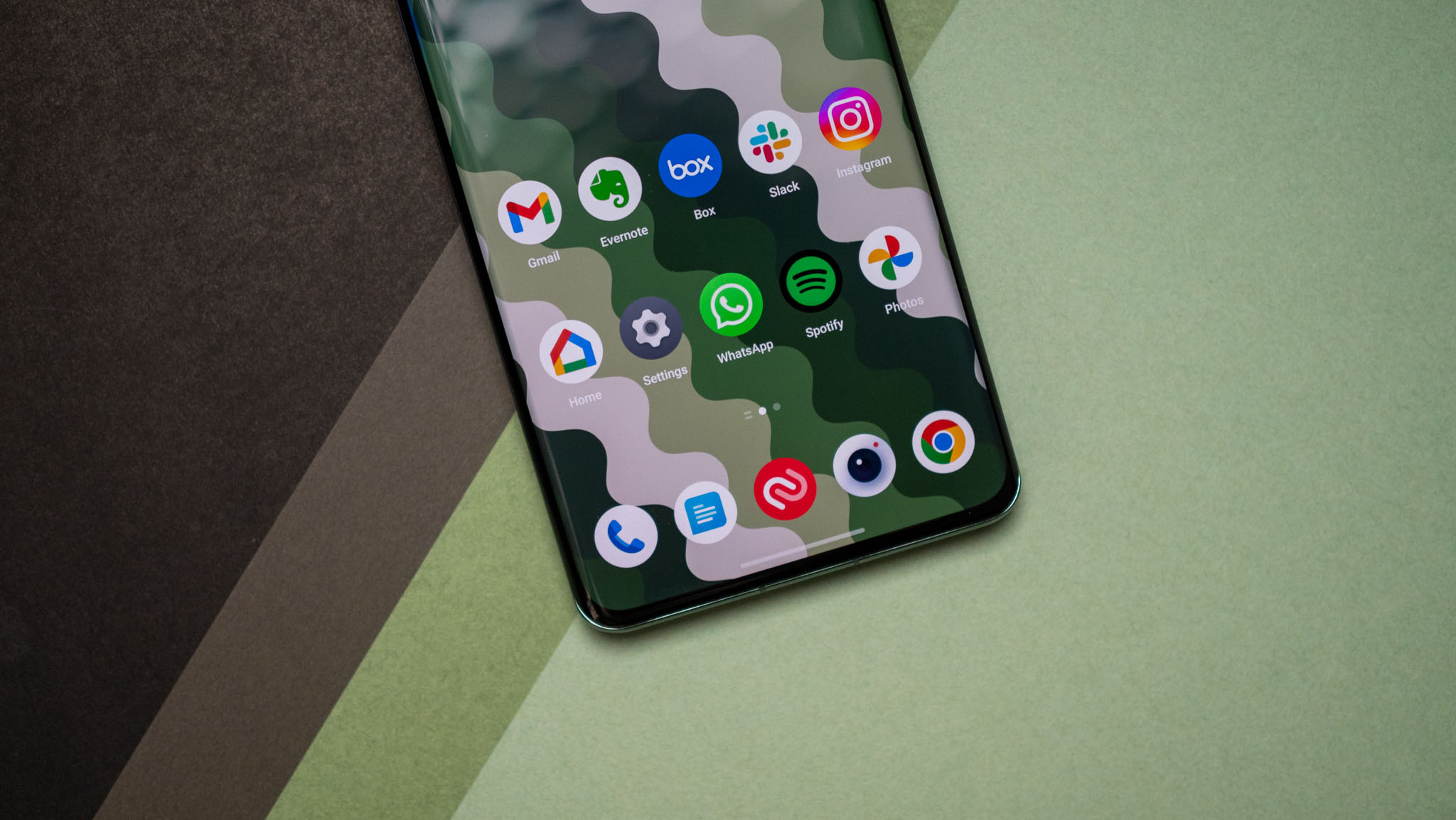
What you don't get is IP68 ingress protection — the device instead has IP65 dust and water resistance, and that just doesn't measure up, particularly when mid-range phones like the Redmi Note 13 Pro+ are now offering this feature as standard. I asked OnePlus why it isn't adding IP68 rating to its device, and this is what the brand told me:
"We have conducted extensive research to gain a deep understanding of user needs, which has guided us in carefully crafting our product. The IP65 waterproof rating we have chosen aligns with the requirements of the majority of users in their daily usage. It offers effective protection against light water splashes, rain, and dust particles, safeguarding the internal components from potential damage."
Also, OnePlus is adding an IR blaster (of all things) to the device, and this particular feature is targeted at Indian customers. You can control a wide range of ACs, TVs, and other devices that use a line-of-sight IR remote, and the likes of Xiaomi have been offering it on their devices for the better part of a decade now.
On the whole, OnePlus did a terrific job with the design. The OnePlus 12 looks spectacular, and while the overall design hasn't changed too much, there are plenty of small tweaks that make a big difference in daily use.
OnePlus 12: Display
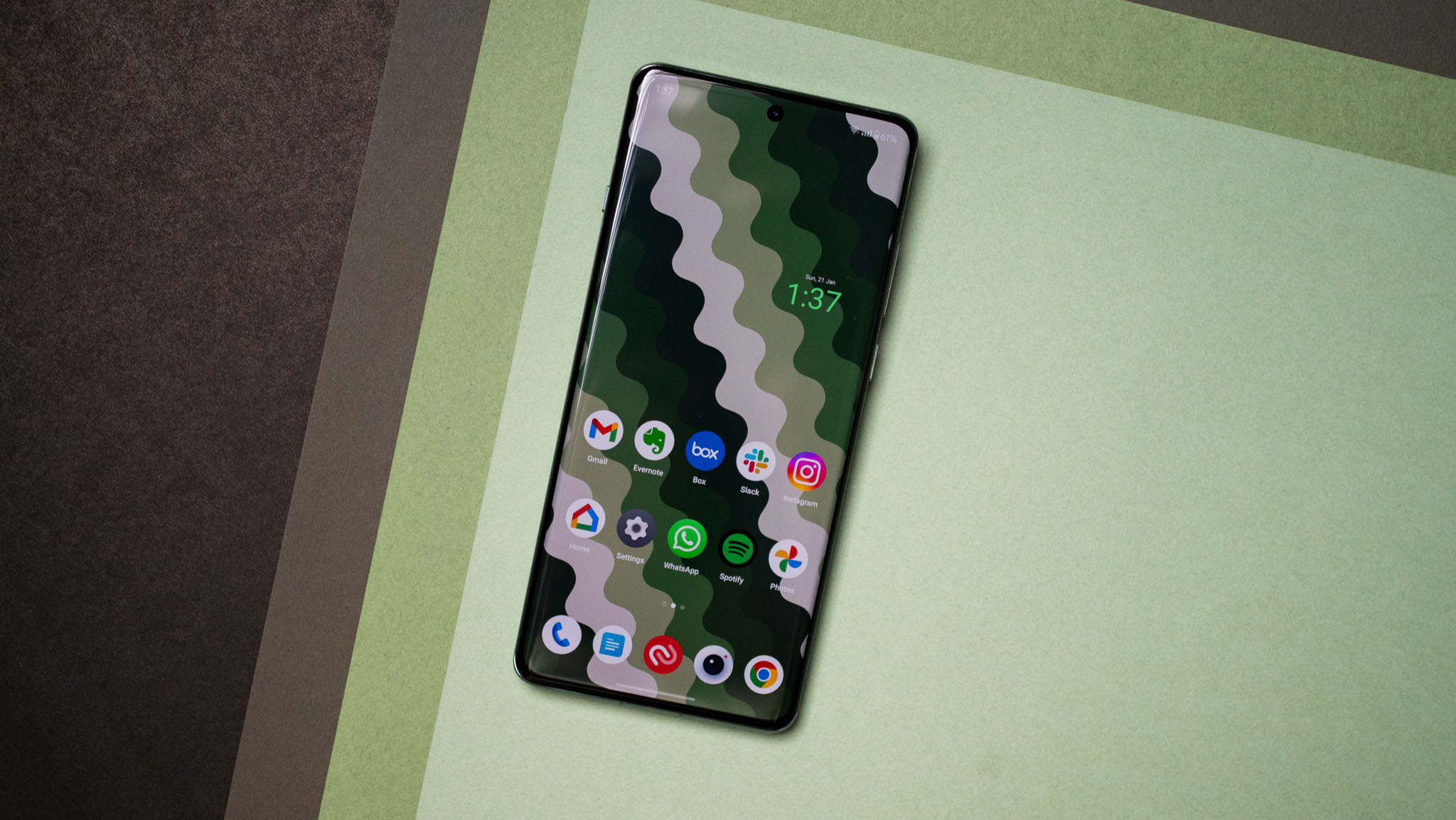
The OnePlus 12 has a marginally larger 6.82-inch AMOLED panel, and you still get LTPO tech that dynamically switches the refresh from 1Hz all the way to 120Hz based on content playing on the screen. There's HDR10+ and Dolby Vision, and the device will get an update that enables Android 14's Ultra HDR mode, allowing you to view images and videos in HDR. The screen has a layer of Gorilla Glass Victus 2, offering much better resistance.
But what's particularly interesting about the screen is the brightness: it goes up to 1,600 nits in high brightness mode — 300 nits more than last year — and an insane 4,500 nits when viewing HDR content, more than any other phone today. The panel is being sourced by BOE, and it is fantastic. While I wasn't able to test those brightness claims, I will admit that the phone does an incredible job streaming HDR content, and there's a noticeable difference when viewing the same content next to the OnePlus 11.
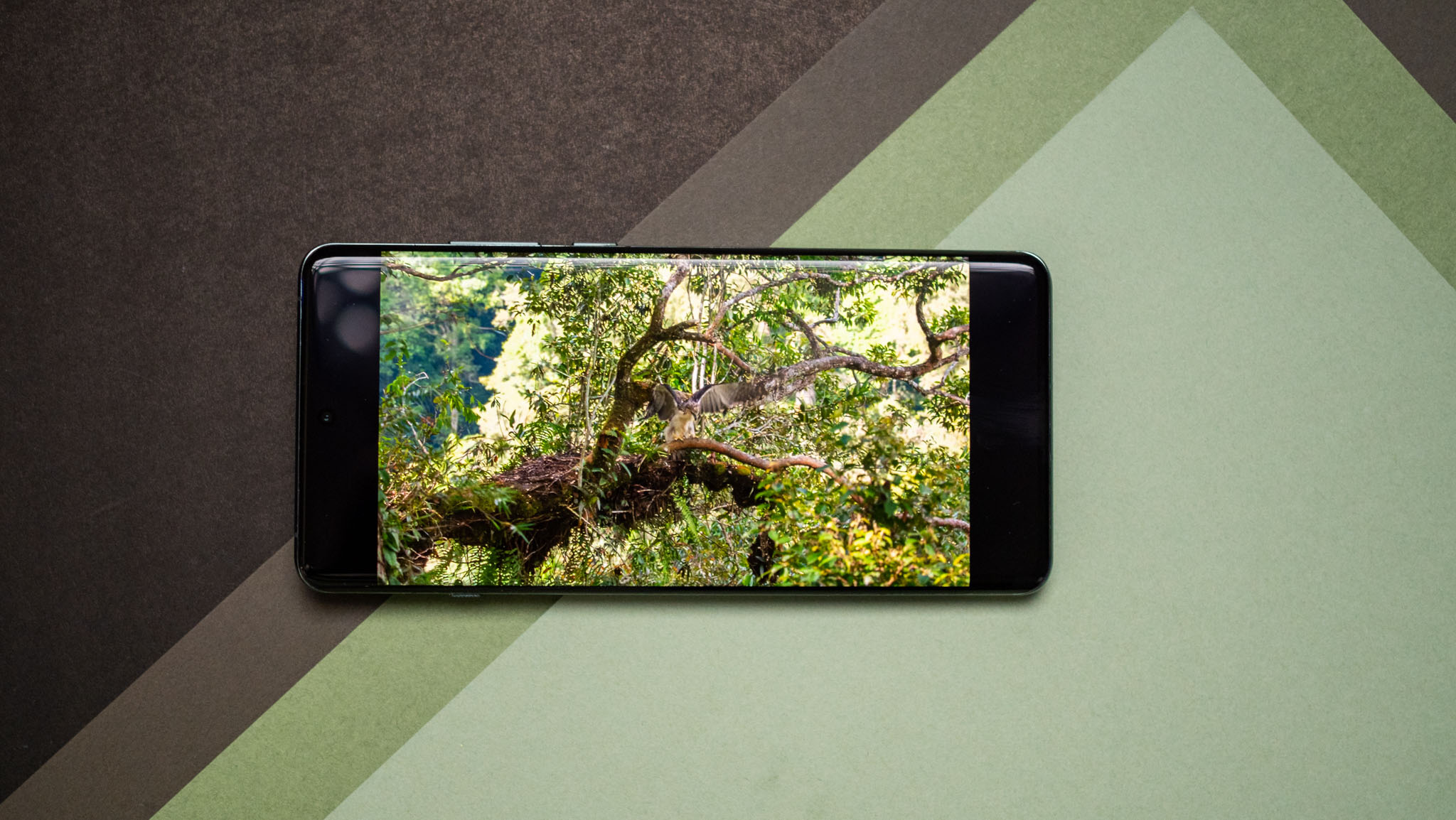
Similarly, it gets much brighter in outdoor use, and I didn't run into any issues with the ambient light sensor adjusting brightness based on lighting conditions. An interesting addition this time is Aqua Touch; the feature ensures the touch response isn't affected when there's water on the screen, and this is nifty if you're outside in the rain and need to use the phone, or as OnePlus puts it, when your fingers get sweaty from intense gaming sessions.
I don't know about that one, but I splashed water on the screen, and it held up incredibly well, delivering an accurate touch response throughout. Another welcome addition is 2,200Hz DC dimming, so if you're sensitive to PWM dimming, you shouldn't notice any strain while using the device.
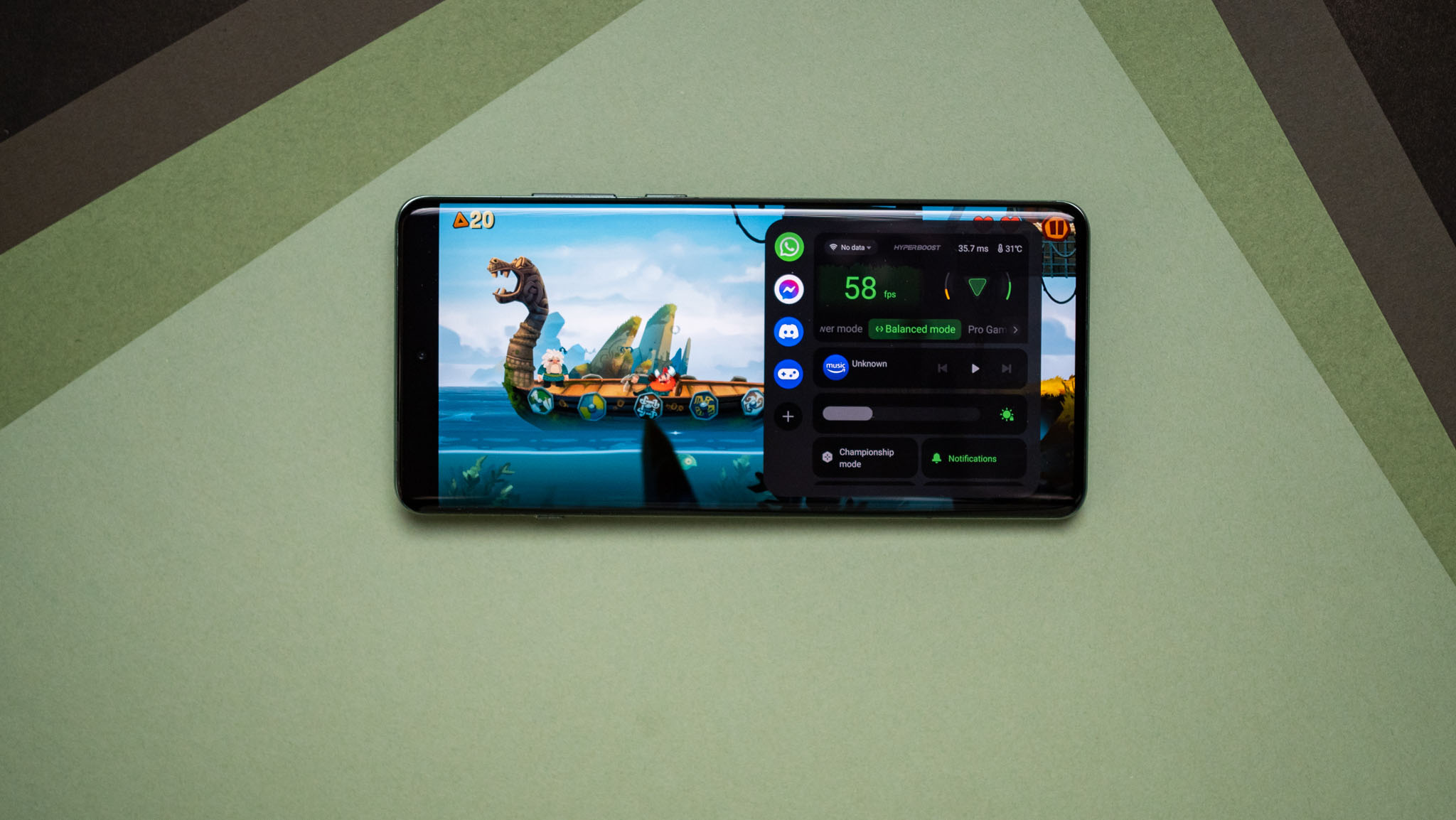
The feature I was excited the most is the ability to play games at 120fps. This has been a glaring omission in recent years, with ColorOS locking all gaming to 60fps; the move didn't make much sense considering the caliber of hardware on offer, but thankfully, that's changing this year. That said, the feature is facilitated by the Pixelworks X7 visual processor, so it won't be available on older OnePlus devices, and it's missing on the OnePlus 12R.
Because of the X7, the OnePlus 12 should be able to play any Android game at up to 120fps, but that just doesn't bore out in real-world use. The usual slate of games I tested were still locked to 60fps, and even titles like Grimvalor and Oddmar — which go up to 120fps on other phones — only hit 60fps even with the frame booster enabled in the game turbo settings (which unlocks the X7).
I'm guessing this issue will be sorted out via an OTA update, but other than that long-standing quibble, the OnePlus 12 gets everything right, and the screen is a real delight to use.
Going with BOE allowed OnePlus to outmatch Samsung in this area, and that's something we just haven't seen in the past. Samsung continues to be the largest manufacturer of AMOLED panels globally, and it saves the best for its own devices. But with China's BOE and Visionox now offering panels of a similar quality and higher brightness, there's a viable alternative available — one that Chinese brands are taking full advantage of.
PWM measurements
Section written by Nick Sutrich.
As the resident PWM sensitive Android Central staff member, I can say the OnePlus 12 is much nicer on the eyes than phones like the Galaxy S24 series. Most of the reason is because OnePlus specifically worked with BOE to create a more vision-friendly display this year.
That starts with a new "ultra anti-flicker" setting that's enabled by default on the phone which utilizes a fascinating triple-pulse pattern to ensure the display isn't too harsh on the eyes regardless of the brightness level.
This mode works by using a unique algorithm that attempts to recreate the more gentle sine wave pattern of an incandescent bulb. You can see how it looks on the graph below, showcasing the alternation of DC-like dimming and PWM dimming at high brightness levels.
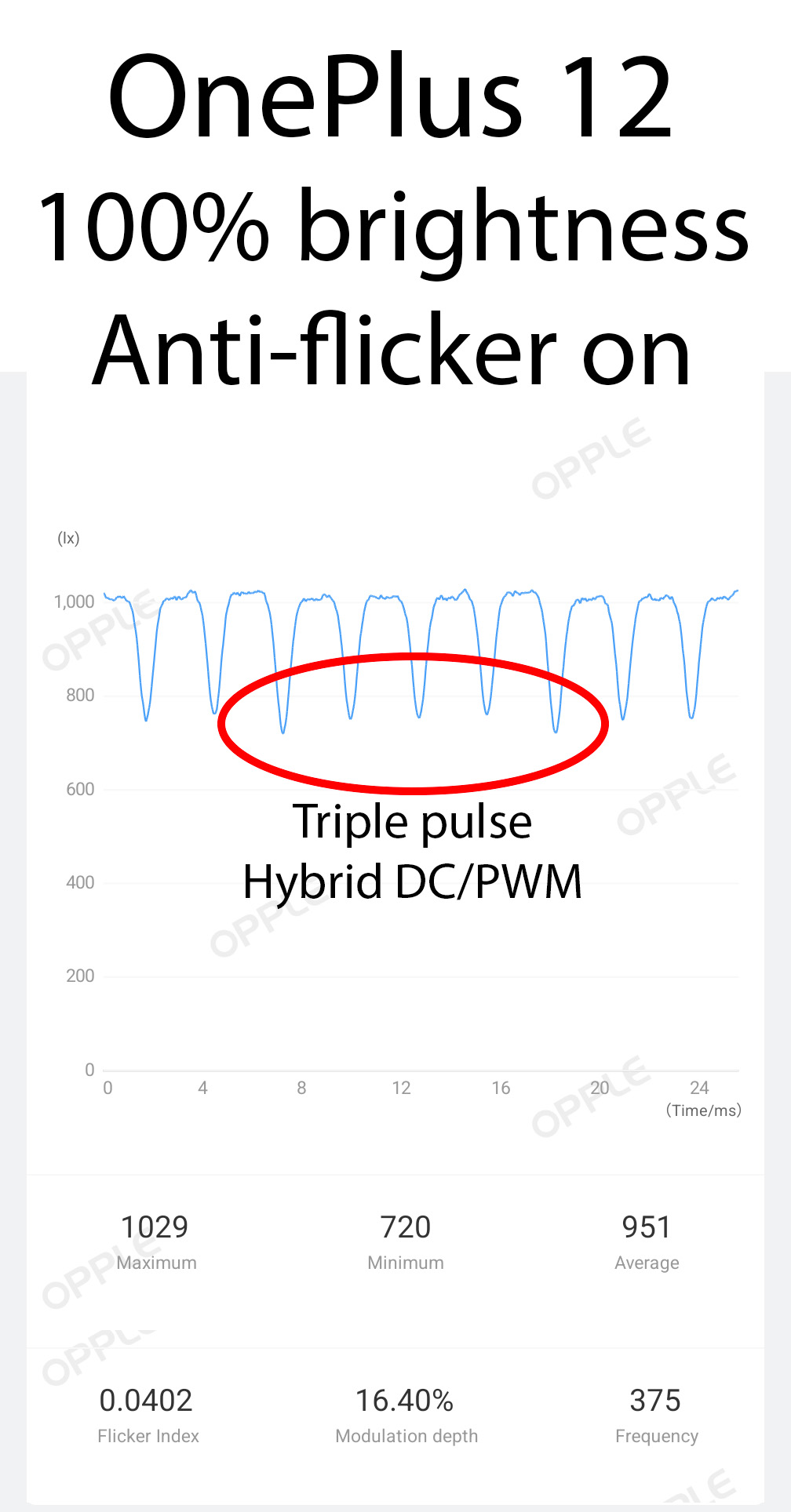
OnePlus also offers a "single-pulse" DC-like dimming mode when ultra anti-flicker is disabled, making it feel a lot more like the Motorola Edge Plus (2023)'s display. In the graph below, you can see the telltale "single dip" of brightness each time the display refreshes its pixels — in this case, 120 times per second, on average — which is easier on the eyes than using PWM dimming at the same frequency.
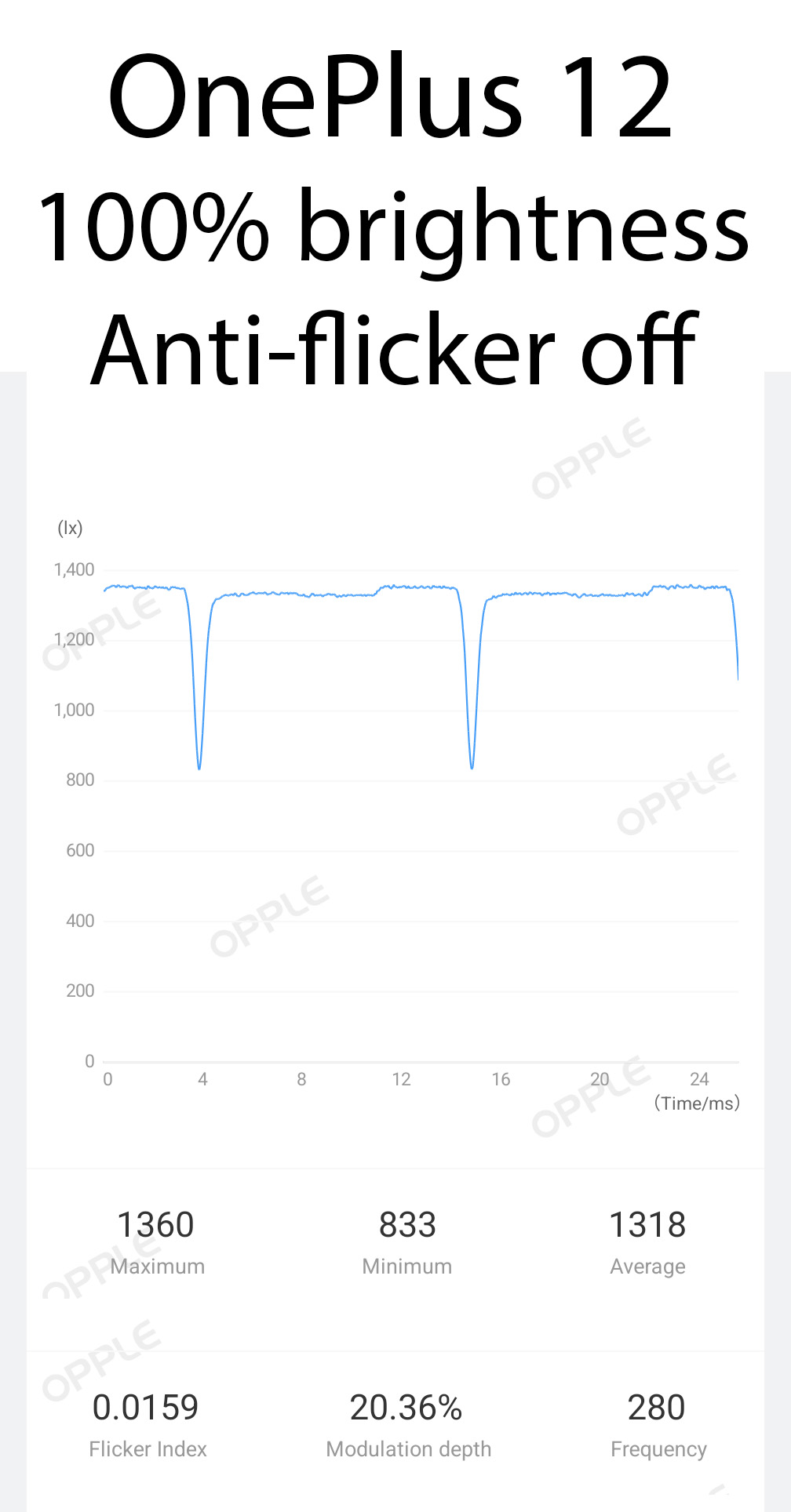
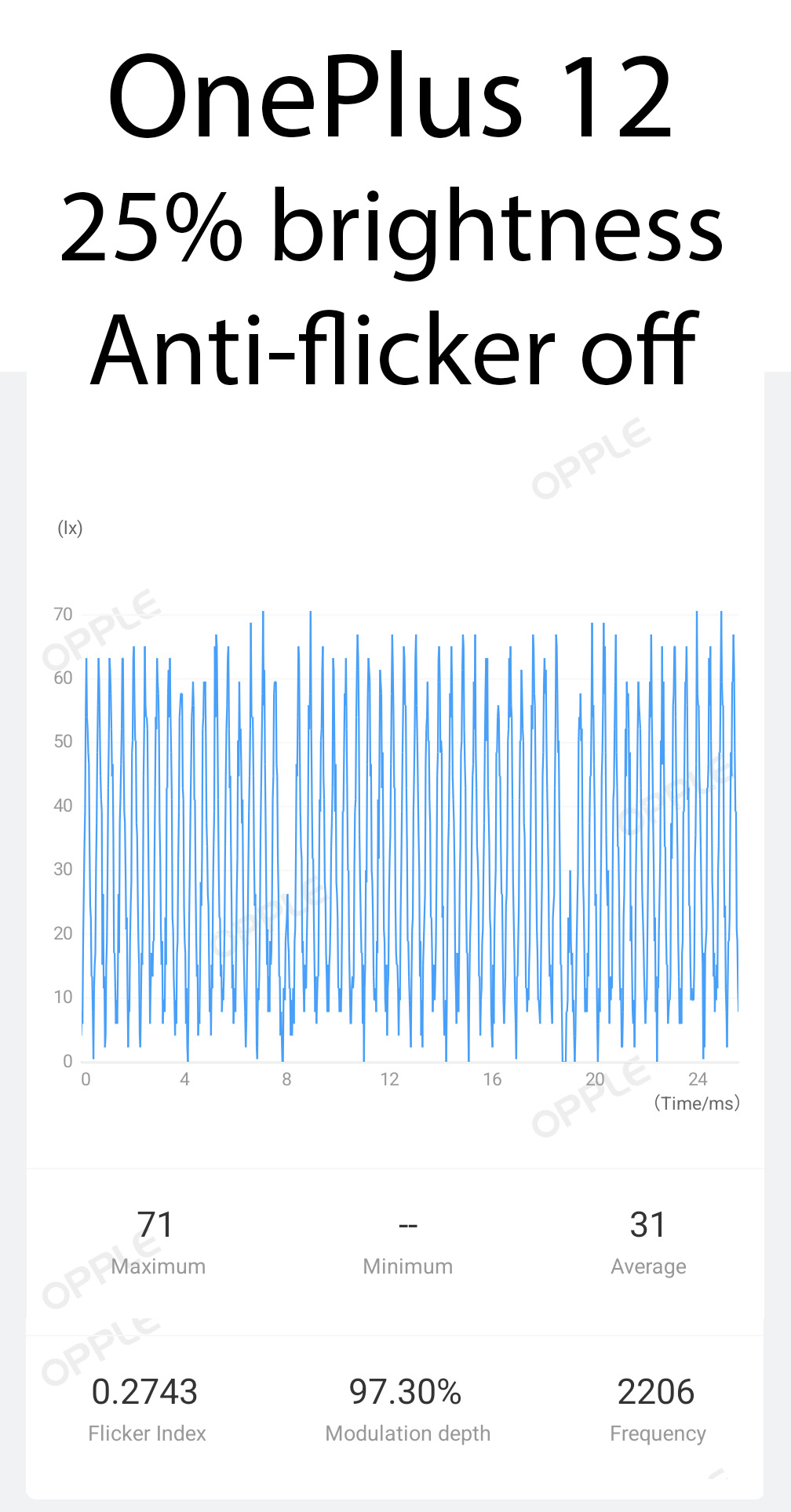
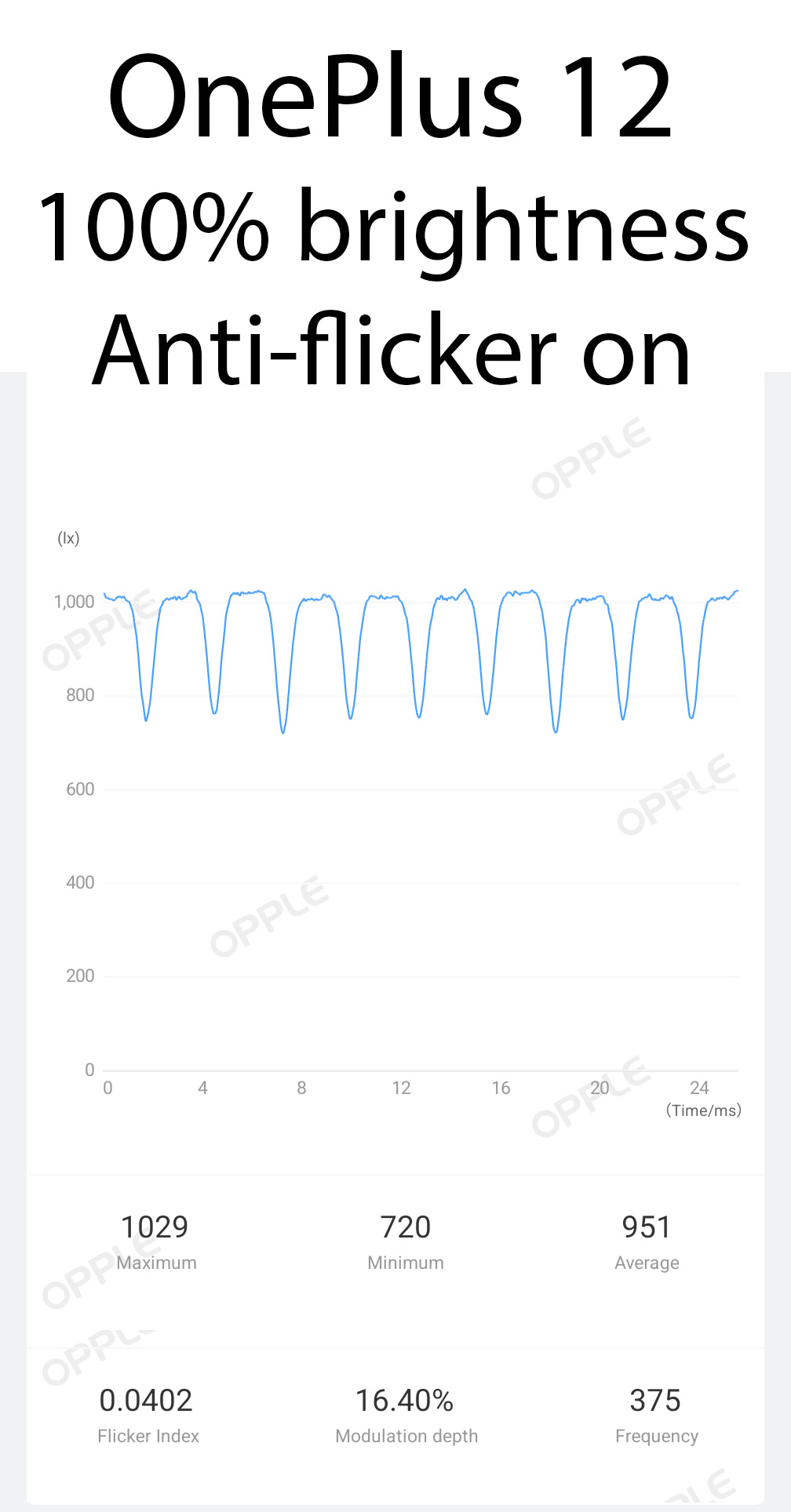
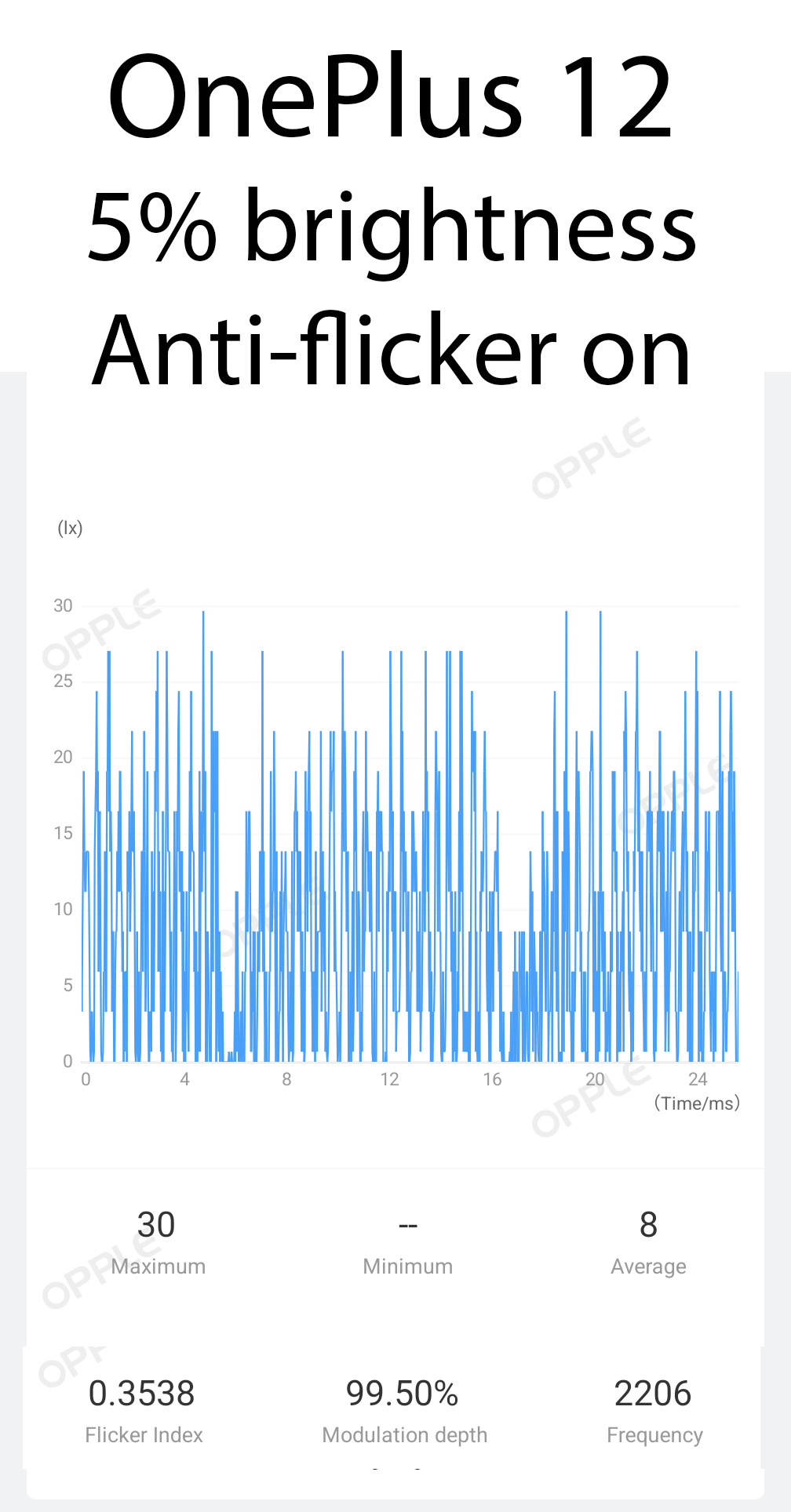
But OnePlus improves things over Motorola's methods at low brightness, switching to 2,200Hz PWM dimming below 25% brightness. This PWM rate is used when anti-flicker is enabled or disabled but behaves slightly differently depending on which you choose.
Either way, OnePlus's efforts to make a more vision-friendly display are paying off here, and users should find this display is far more comfortable than the average flagship Android phone.
OnePlus 12: Performance
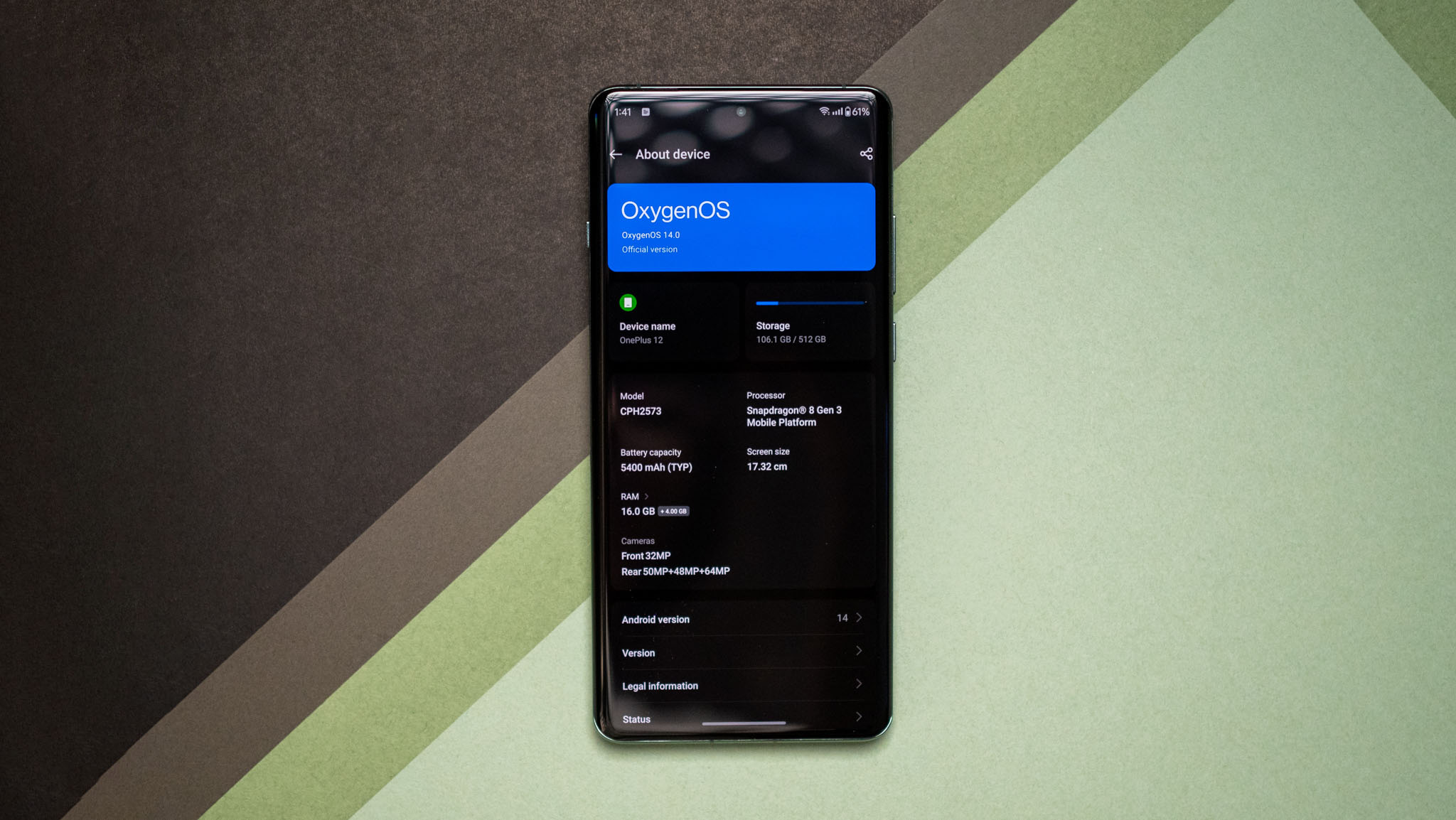
The OnePlus 12 ticks all the right boxes when it comes to the hardware; it is powered by the Snapdragon 8 Gen 3, and the variant I'm using has 16GB of RAM and 512GB of storage. OnePlus is making a big deal of the efficacy of the cooling system, and this leads to much better sustained performance in demanding games.
Those claims are borne out in real-world testing, and the phone managed to deliver outstanding performance figures with no noticeable throttling in extended gaming sessions. What's particularly interesting is that it didn't get as hot as some of the other devices I tested based on the same silicon, and that makes a real difference. Of course, I was only able to test games at 60fps, but even sustaining those framerates in titles like Call of Duty Mobile over 60 minutes is a big deal.
The phone posts abnormally low scores in Geekbench 6, with the single-core score lower than last year (1008). The iQOO 12 is powered by the same 8 Gen 3, and its scores are 74% faster. It's likely that the phone is set up to throttle under any kind of sustained load, and while this doesn't show up in real-world use, it is evident when running synthetic workloads.
In 3DMark's Solar Bay stress test, the OnePlus 12 managed a stability score of 58%, which is decent — it's more than that of the iQOO 12 and Vivo X100 Pro. But what stood out was that it didn't even get warm, going up to just 40 degrees Celsius — the iQOO 12 went up to 43 degrees, and the ASUS ROG Phone 8 Pro hit 53 degrees.
I didn't see any slowdowns or glitches whatsoever in daily use, and the phone is optimized to take advantage of the powerful hardware, so the interface is smooth. You can also pick up the device in a 12GB/256GB version, and OnePlus really should have launched the 24GB/1TB model outside China.
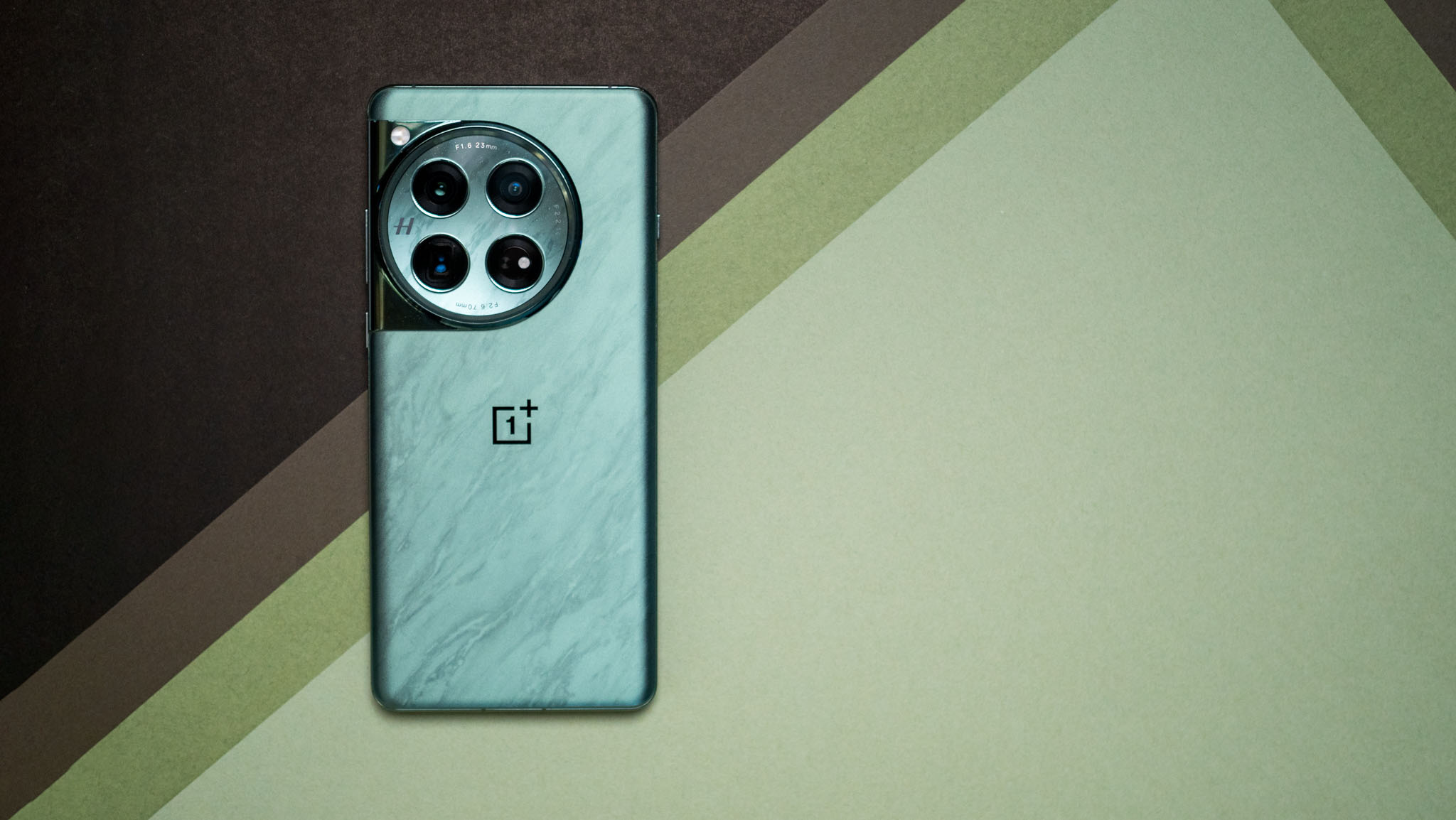
According to the brand, users in China tend to use devices with more RAM as they play demanding games like Genshin Impact and Honkai: Star Rail, and okay, that's a reasonable argument to be made — you don't need 24GB of RAM on a device. The justification for not launching the 1TB variant is that global users tend to use a mix of local storage and cloud services, whereas Chinese users eschew the cloud in favor of local storage. I still think a 16GB/1TB model would have been a great option, but it looks like OnePlus wasn't interested in launching a phone that costs over $899.
OnePlus also notes that the phone is designed to last up to four years without any noticeable slowdowns, and I'll do a long-term update to see those claims hold up. As for connectivity, the OnePlus 12 has a Wi-Fi 7 modem, and you get global 5G Sub-6 bands, Bluetooth 5.4, AptX, AptX HD, LDAC and LHDC audio codecs, and NFC.
There were no issues with calls or connectivity in general, and when connected to the Orbi 970 Wi-Fi 7 router, the phone hit Gigabit bandwidth consistently. What I like is that the USB-C port is now based on the USB 3.2 Gen 1 standard, and that's a positive move; OnePlus has been stingy in this area in the past by using the USB 2.0 standard, and thankfully, that isn't a limitation on the OnePlus 12.
I also like the vibration motor; it manages to deliver granular feedback in daily use, and you get a decent amount of configurability. The OnePlus 12 is one of the fastest phones you can get at the moment, and it is one of the best OnePlus phones I used to date.
OnePlus 12: Battery life
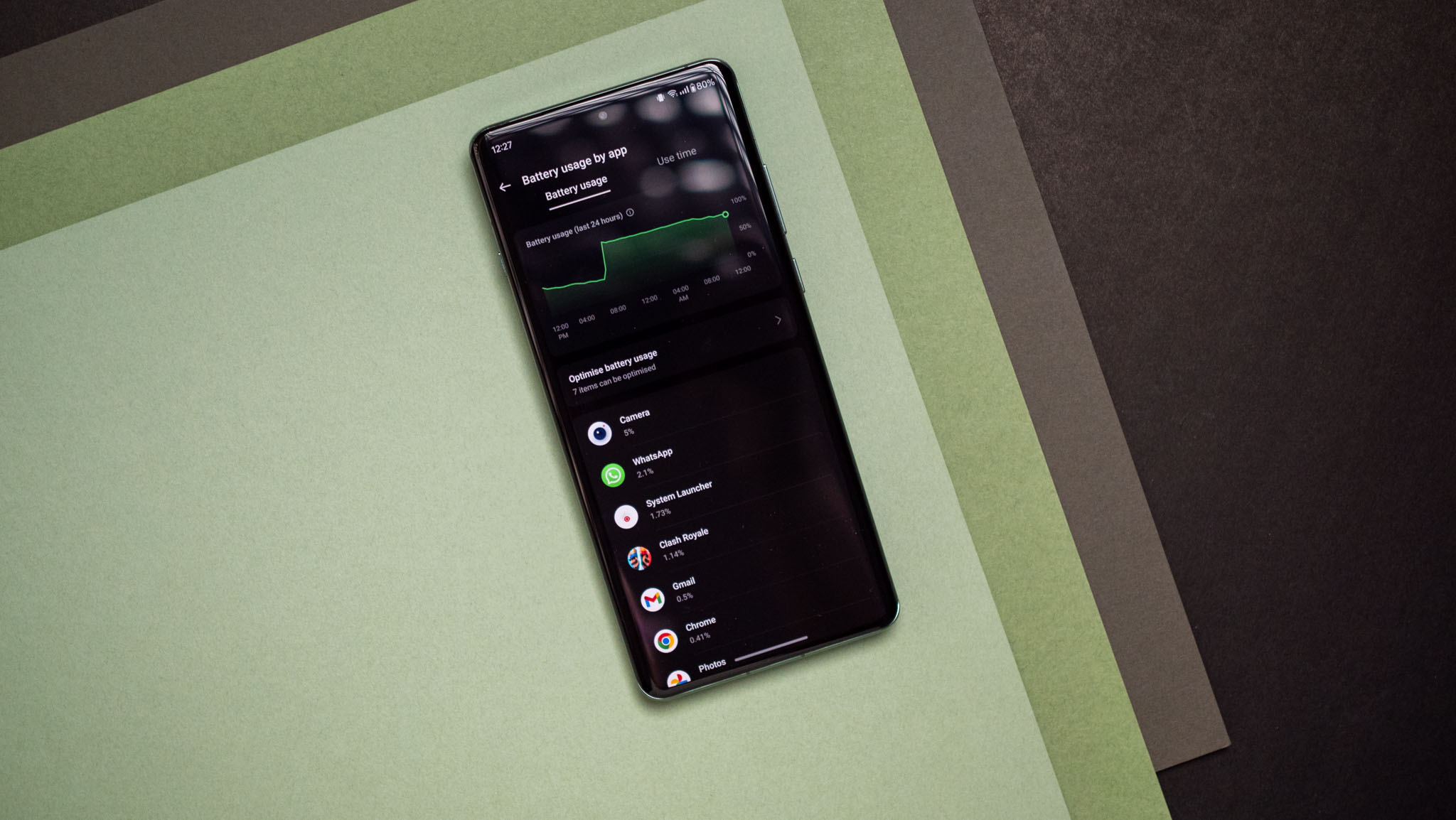
OnePlus slotted in a larger 5400mAh battery on the OnePlus 12, and that absolutely makes a difference — the phone manages to last two days consistently, and even with heavy use, I got a day and a half worth of use. Battery life is so good that I no longer charge the device overnight; I instead plug it in when the charge goes below 15%, and in under half an hour, it's fully charged.
The OnePlus 12 uses the same 100W charging tech as last year, and because of the larger battery, a full charge takes a smidgen over 30 minutes, with the phone hitting the 50% mark in just over 12 minutes. I have zero issues with the charging potential, and there is no reason to be anxious about the battery running out before the end of the day. The bundled 100W charger is bulky, and it has a USB-A port, but other than that, it does an admirable job delivering a reliable charge to the device.
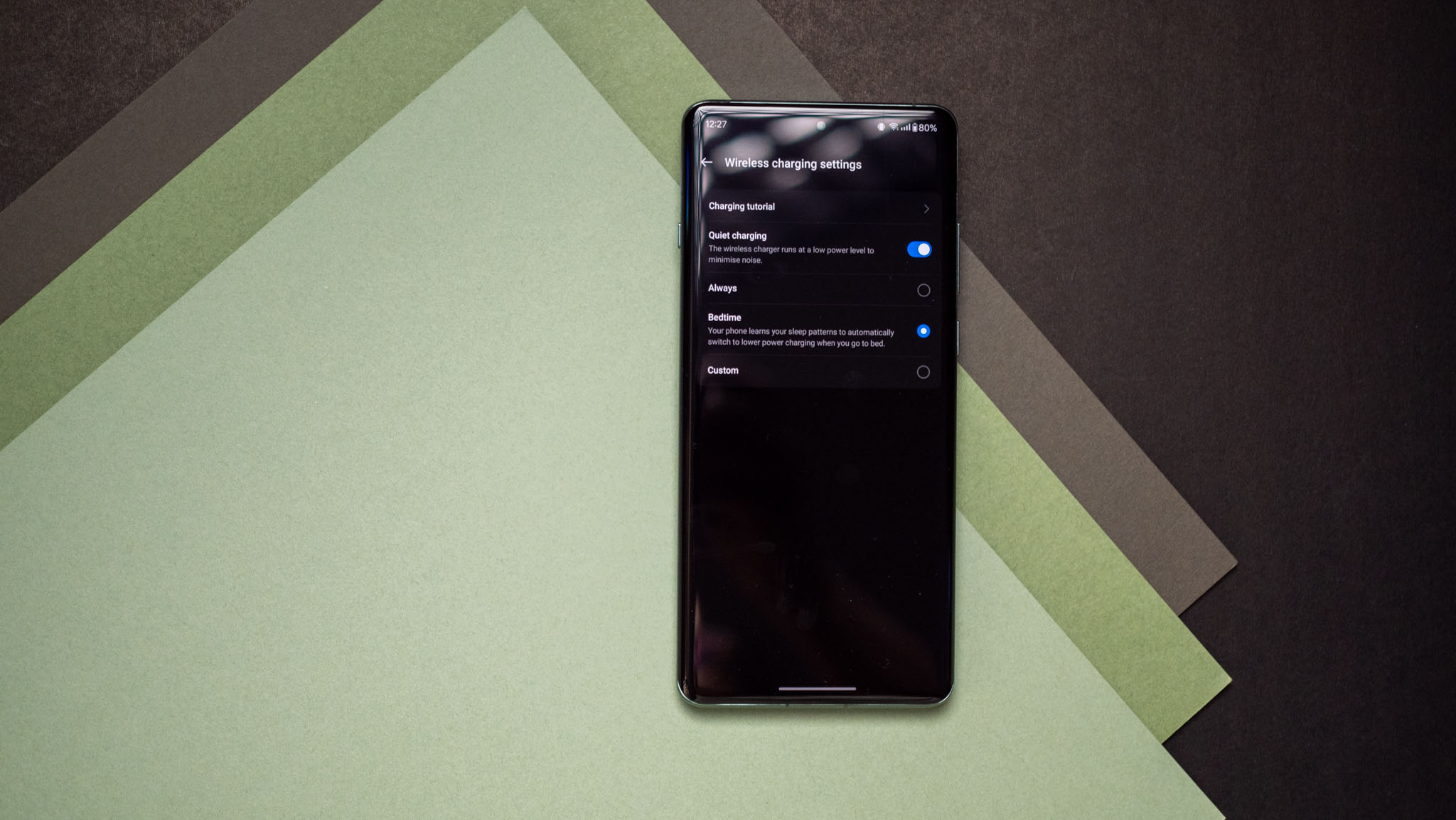
Obviously, the key talking point this time is the inclusion of wireless charging, which was left out last year. The OnePlus 12 works over the 50W AirVOOC standard, and it takes just an hour to charge the battery via the wireless charging stand. You get the usual safeguards to prolong battery life, including steady charging, limiting maximum charge level, and so on.
OnePlus 12: Cameras
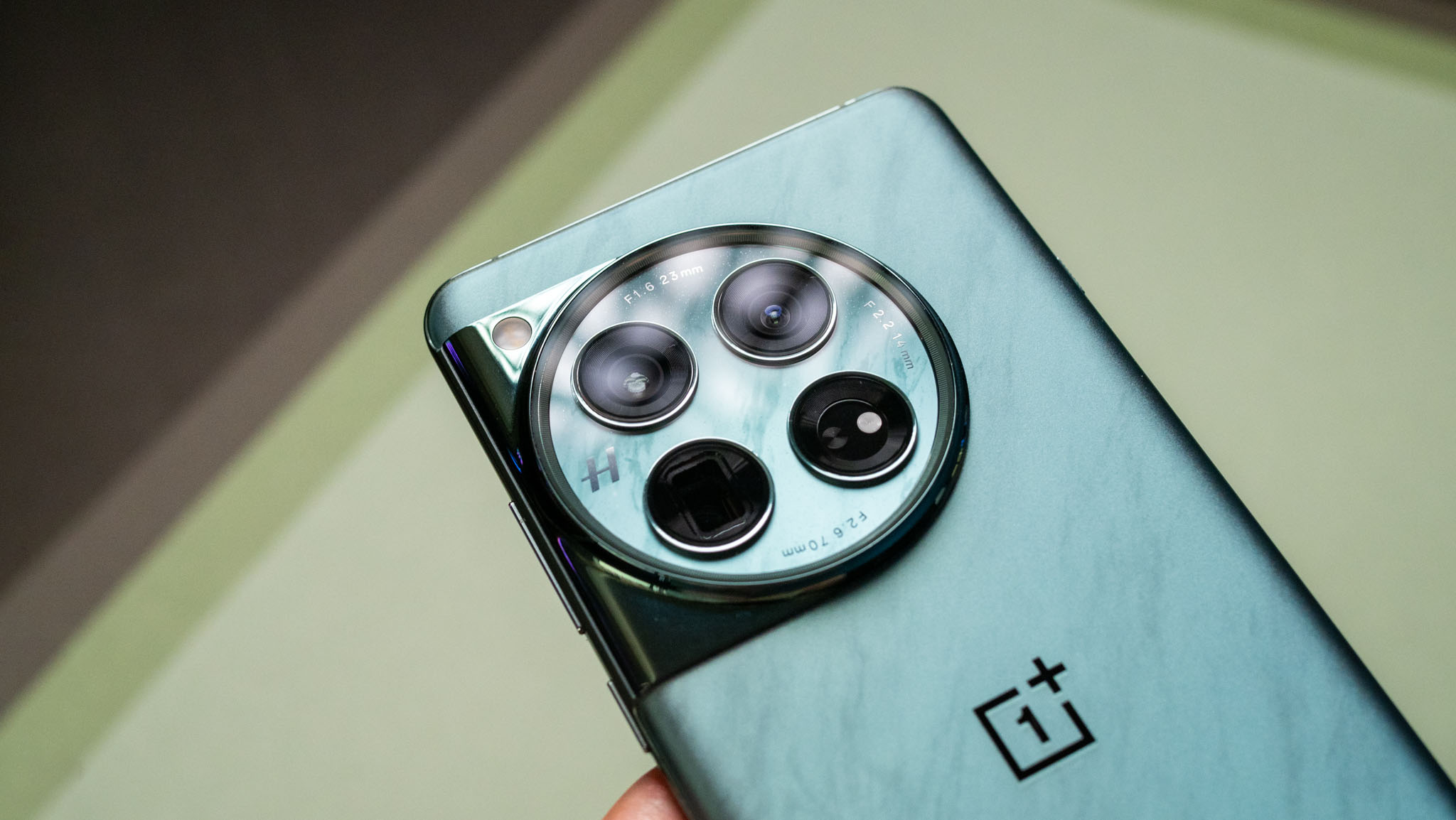
This is the fourth year of the collaboration between OnePlus and Hasselblad, and this time, the partnership is aimed at delivering accurate colors, managing shadows and highlights in low-light shots, and eking out the best clarity. To achieve that, the OnePlus 12 has new camera hardware; there's now a 50MP f/1.6 Sony LYT-808 with a 1/1.4-inch sensor and OIS that serves as the main camera, and it has much better light sensitivity.
The LYT-808 is a variant of the sensor that was used in the Open foldable, and similar to that device, it does a terrific job on the OnePlus 12. Joining the main camera is a 64MP OmniVision OV64B telephoto lens with a 1/2-inch sensor and OIS that delivers 3x optical zoom and 6x in-sensor zoom. You get digital zoom that goes up to 120x, and while that's mostly a gimmick, you get usable shots at up to 10x, and that's no small feat.
Rounding out the rear cameras is a 48MP wide-angle lens that uses an f/2.2 Sony IMX581 lens with a 1/2-inch sensor. You get autofocus this time, and the lens doubles as a macro shooter, serving up decent shots from just 3.5cm away. The main camera has a 23mm focal length, the wide-angle lens has 14mm, and the zoom lens goes from 70mm at 3x to 145mm at 6x. Up front, there's a 32MP f2.4 Sony IMX615 with a 1/2.74-inch sensor, and like last year, there's no autofocus.
All three cameras at the back can shoot 4K video at 60fps, and Dolby Vision video is available up to 4K/30 via the main camera and 3x lens. You get the usual Hasselblad filters, and these can be used with photos as well as videos. The camera interface is similar to previous years, and you get distinct orange accents throughout along with the leaf shutter sound that's a characteristic of Hasselblad cameras.
And if you're one to show off, you can enable the watermark mode that adds a bar at the bottom that shows shooting parameters along with the name of the phone and the Hasselblad logo. There's also a general watermark that puts a Shot on OnePlus | Hasselblad overlay, and you can add location details, date and time, and any customized text.
Pro mode is intact, and you get the ability to shoot in RAW and tweak all the usual settings to your likin. The high-res mode lets you take full-resolution shots from any of three sensors, and you get a panorama, tilt-shift, slow-motion, and dual-view video modes in addition to film and X-Pan.
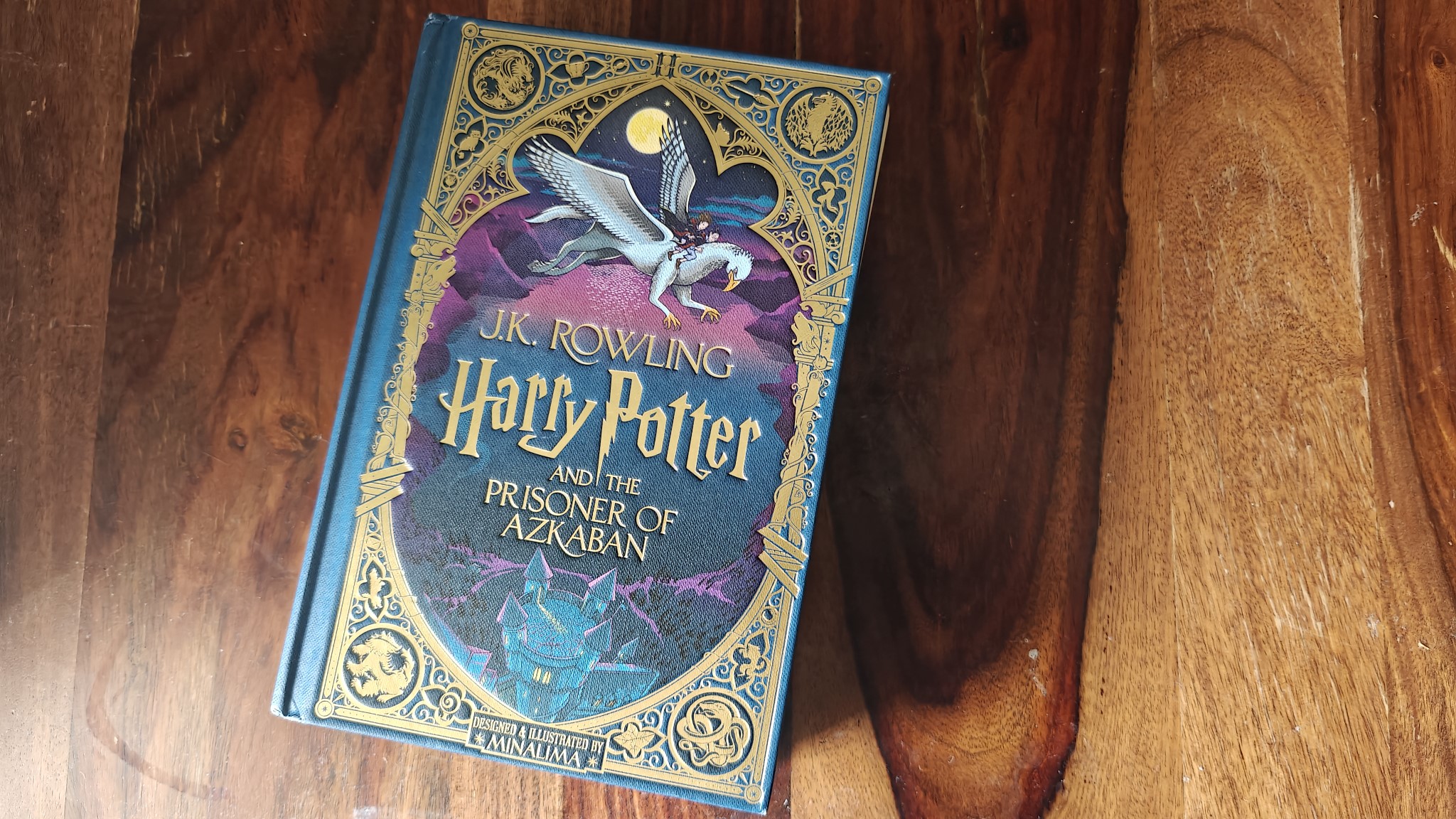

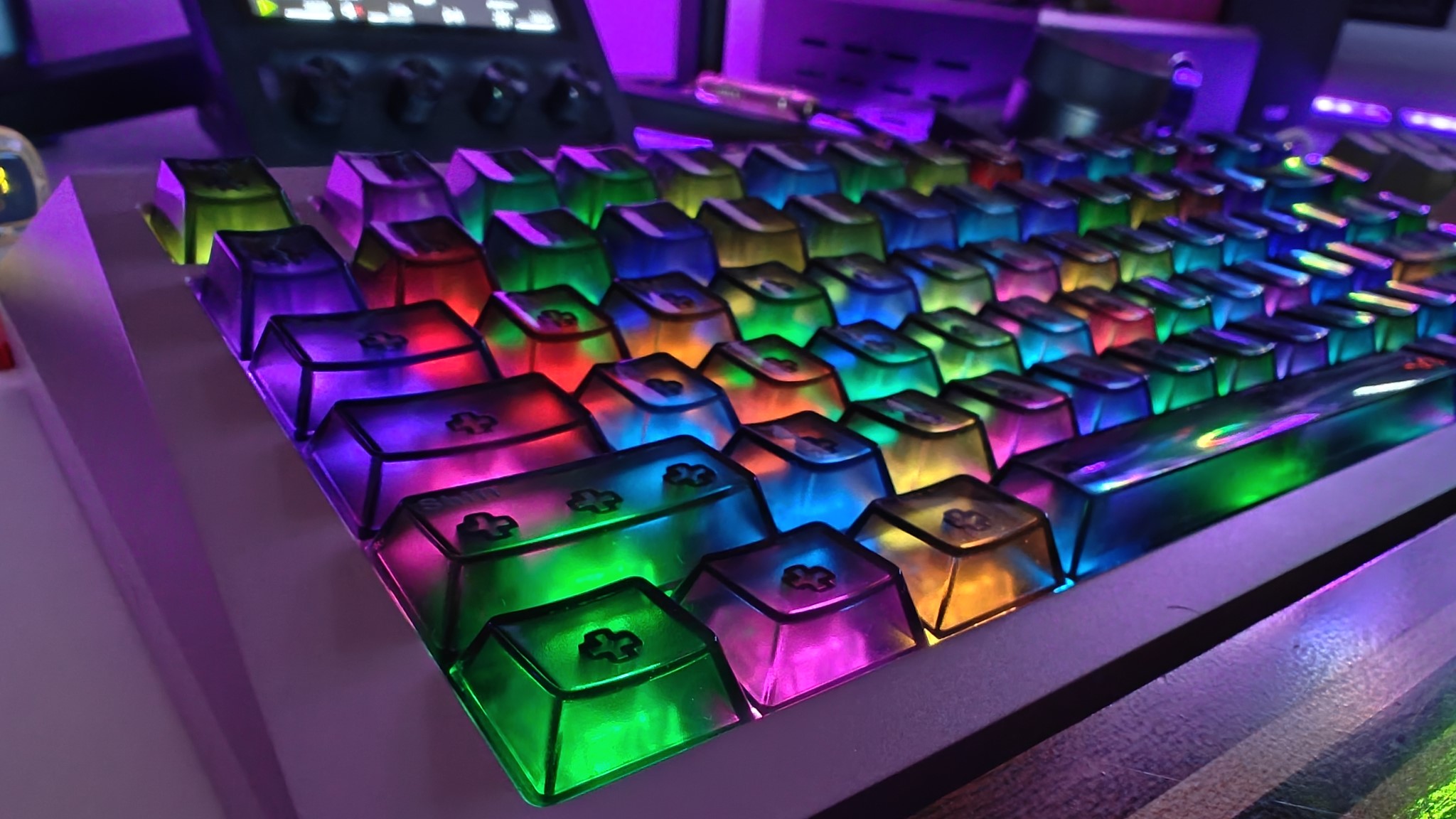
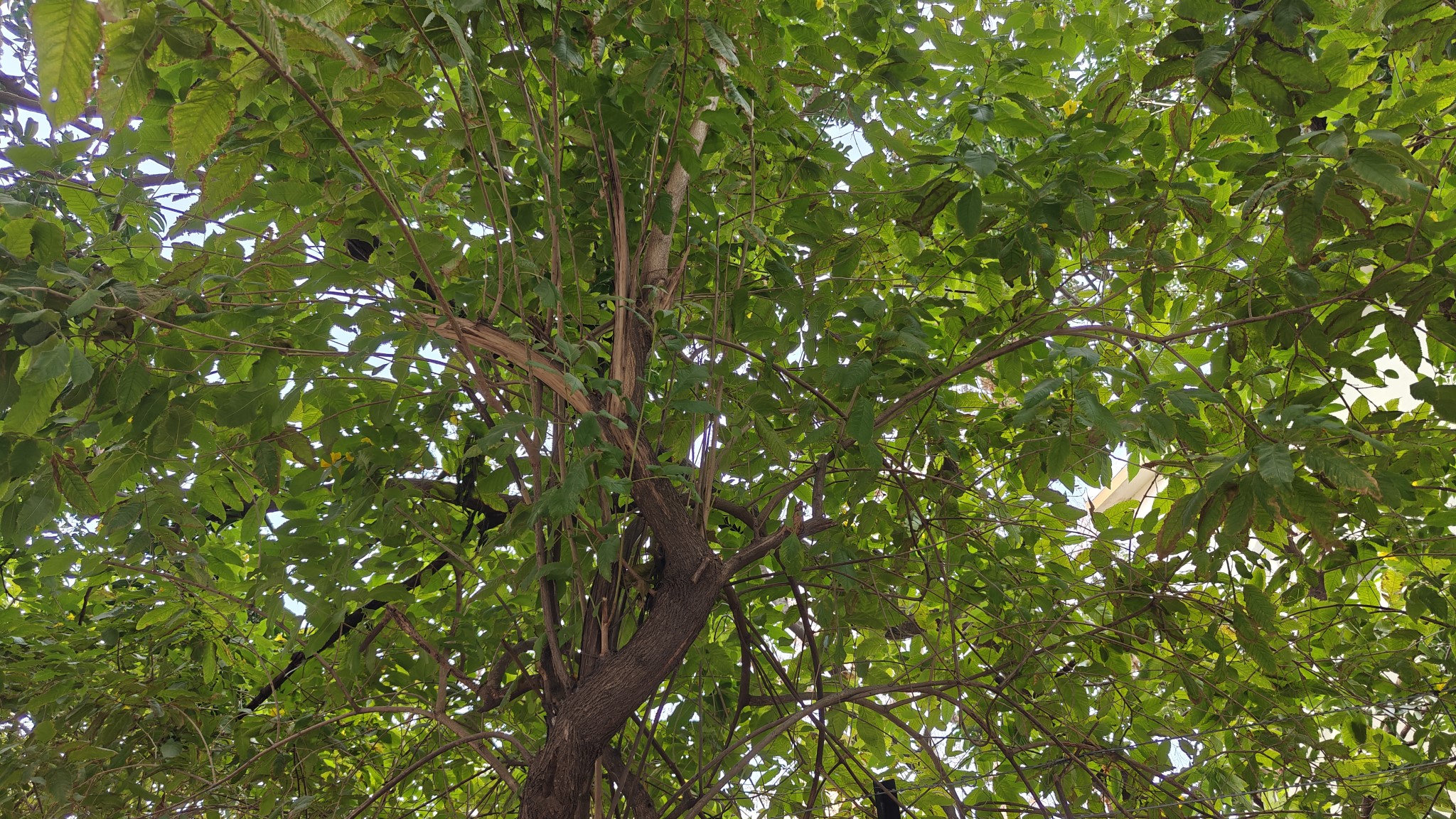
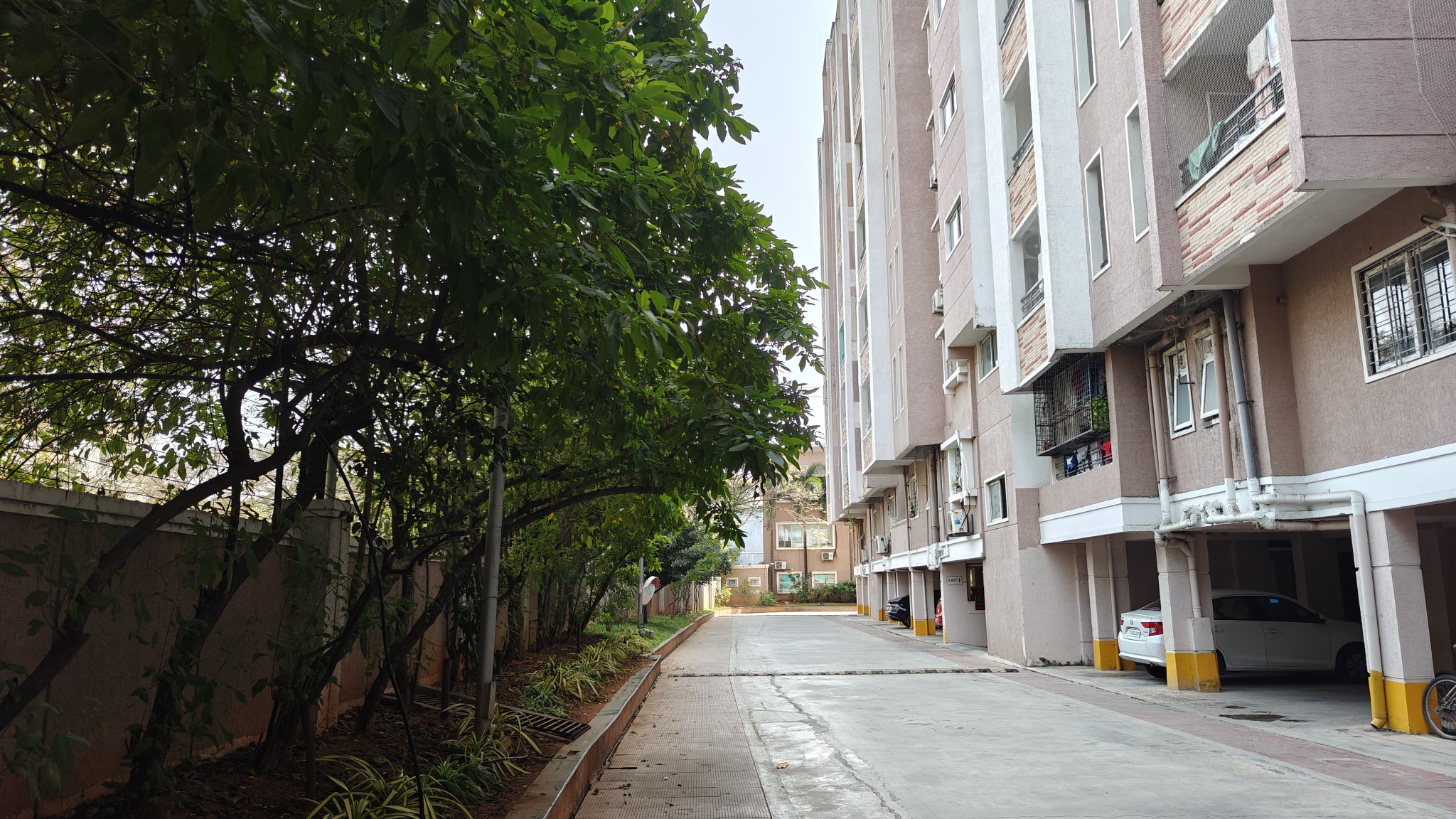
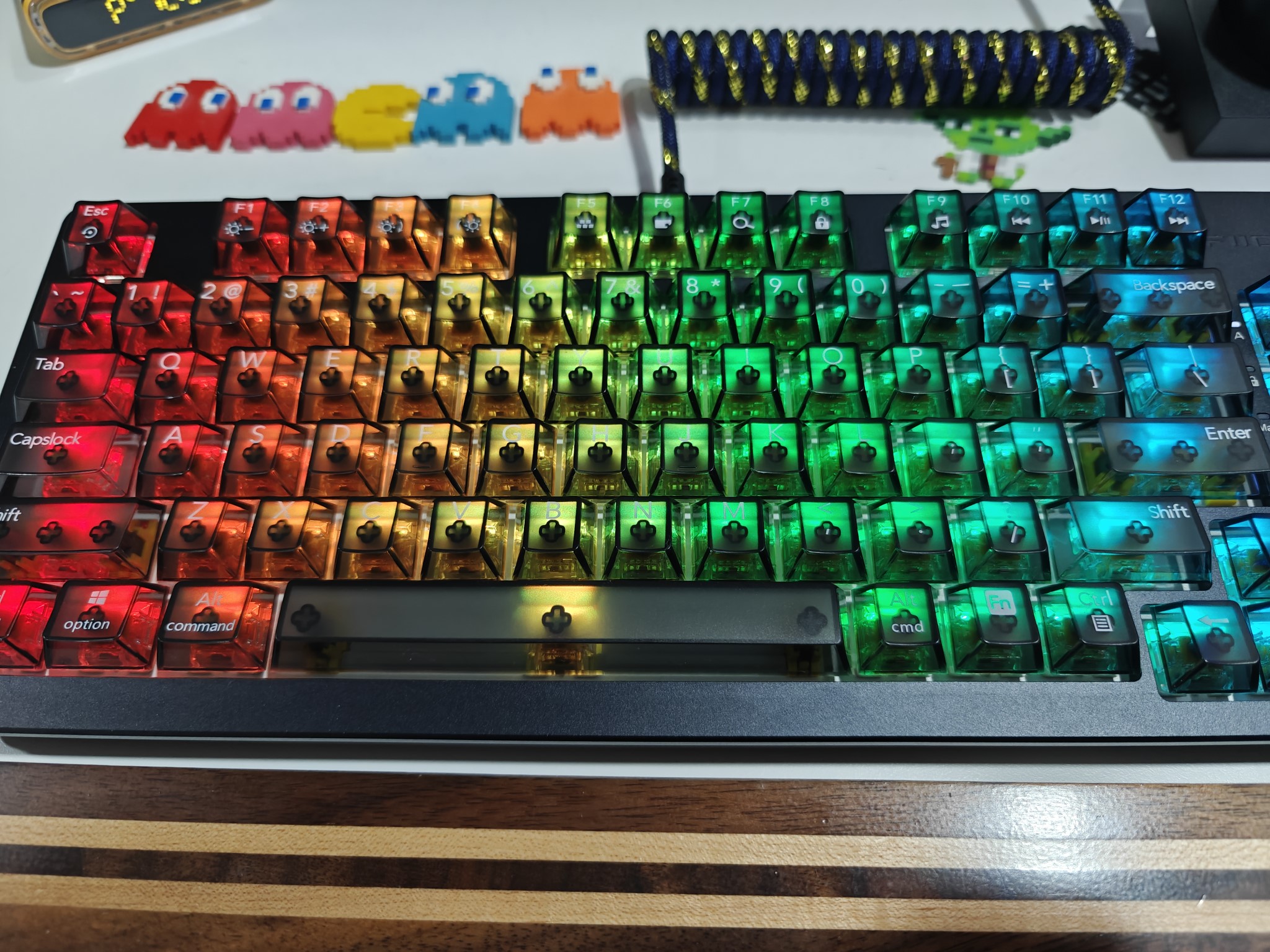
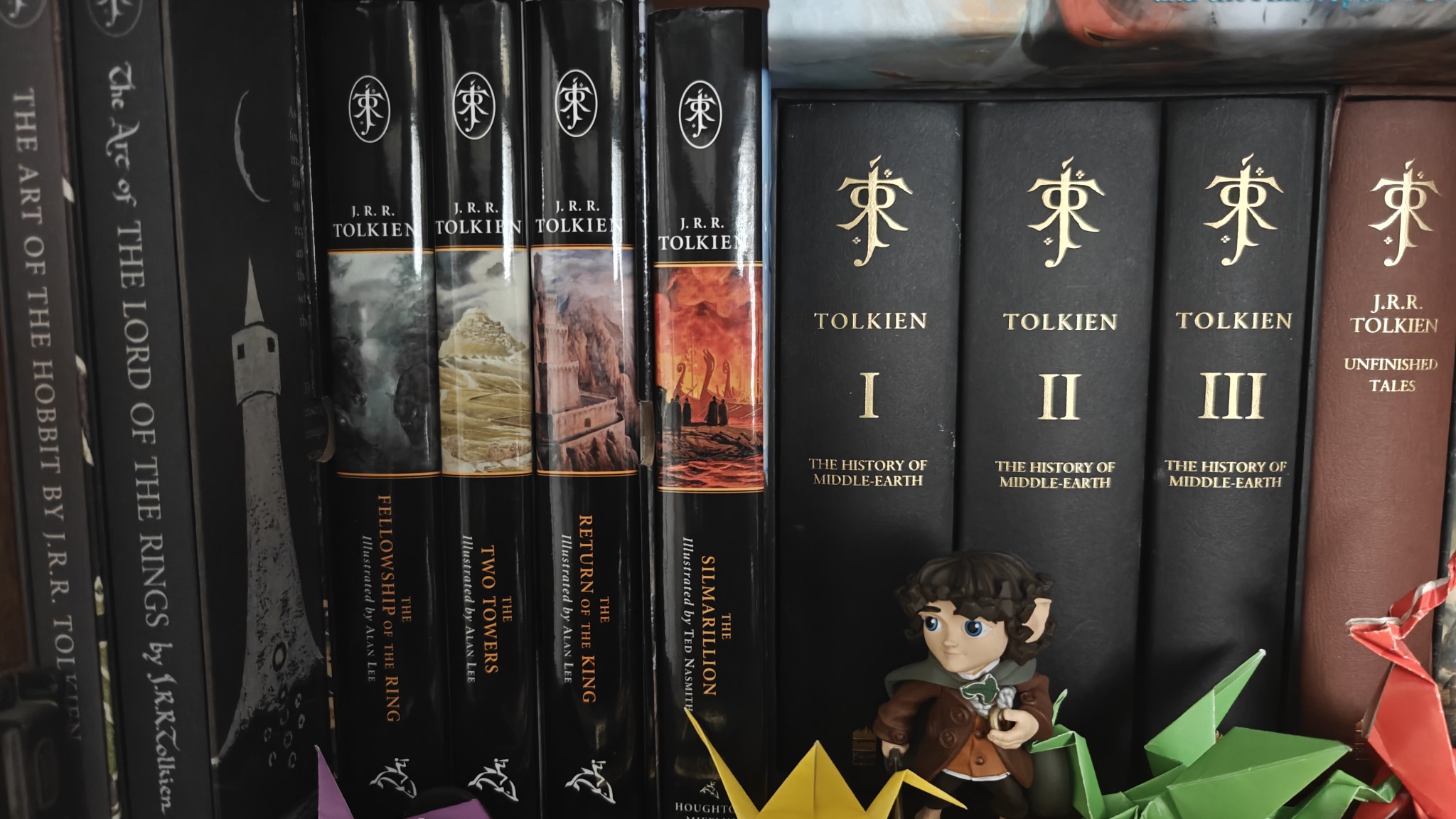
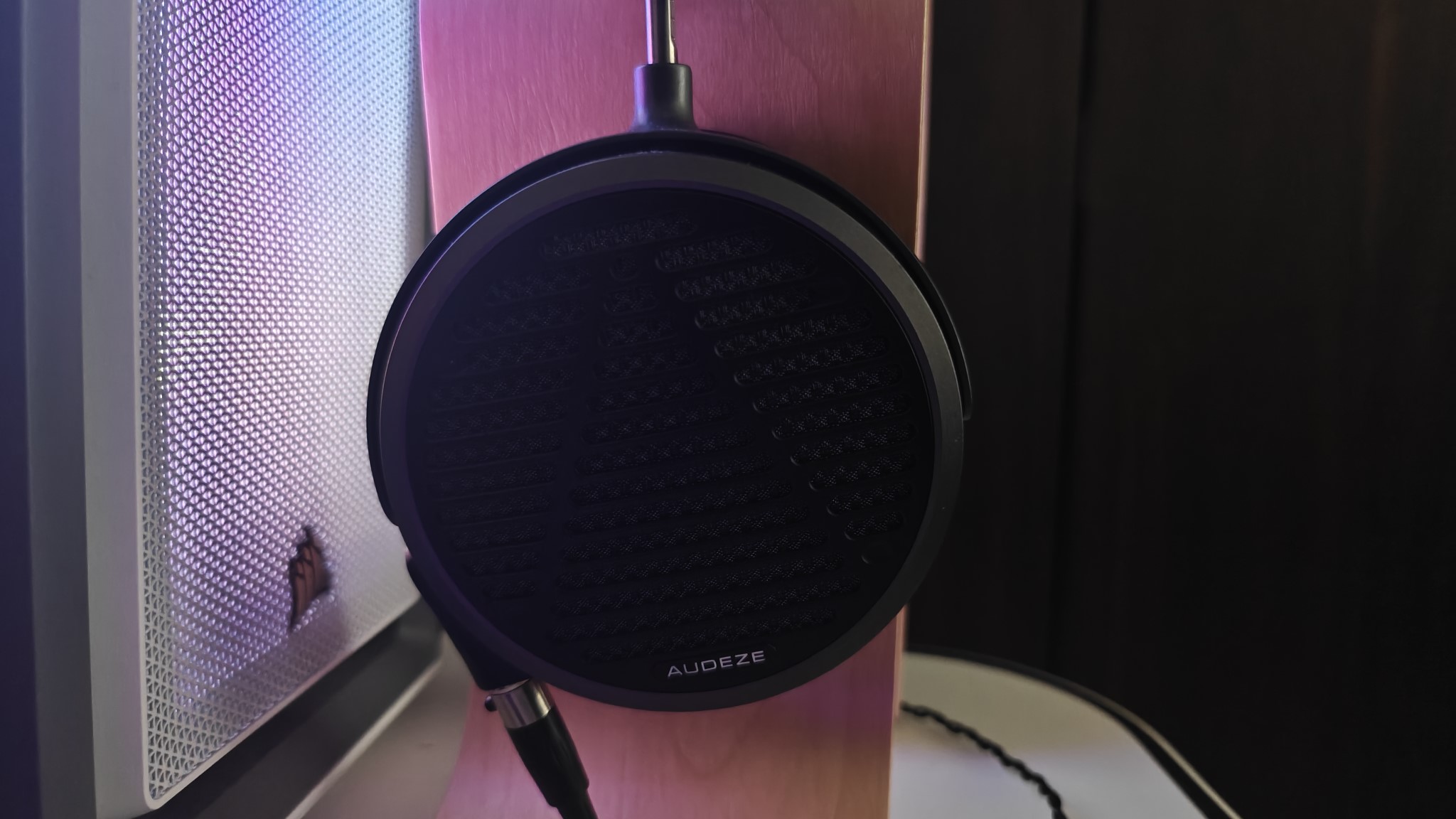
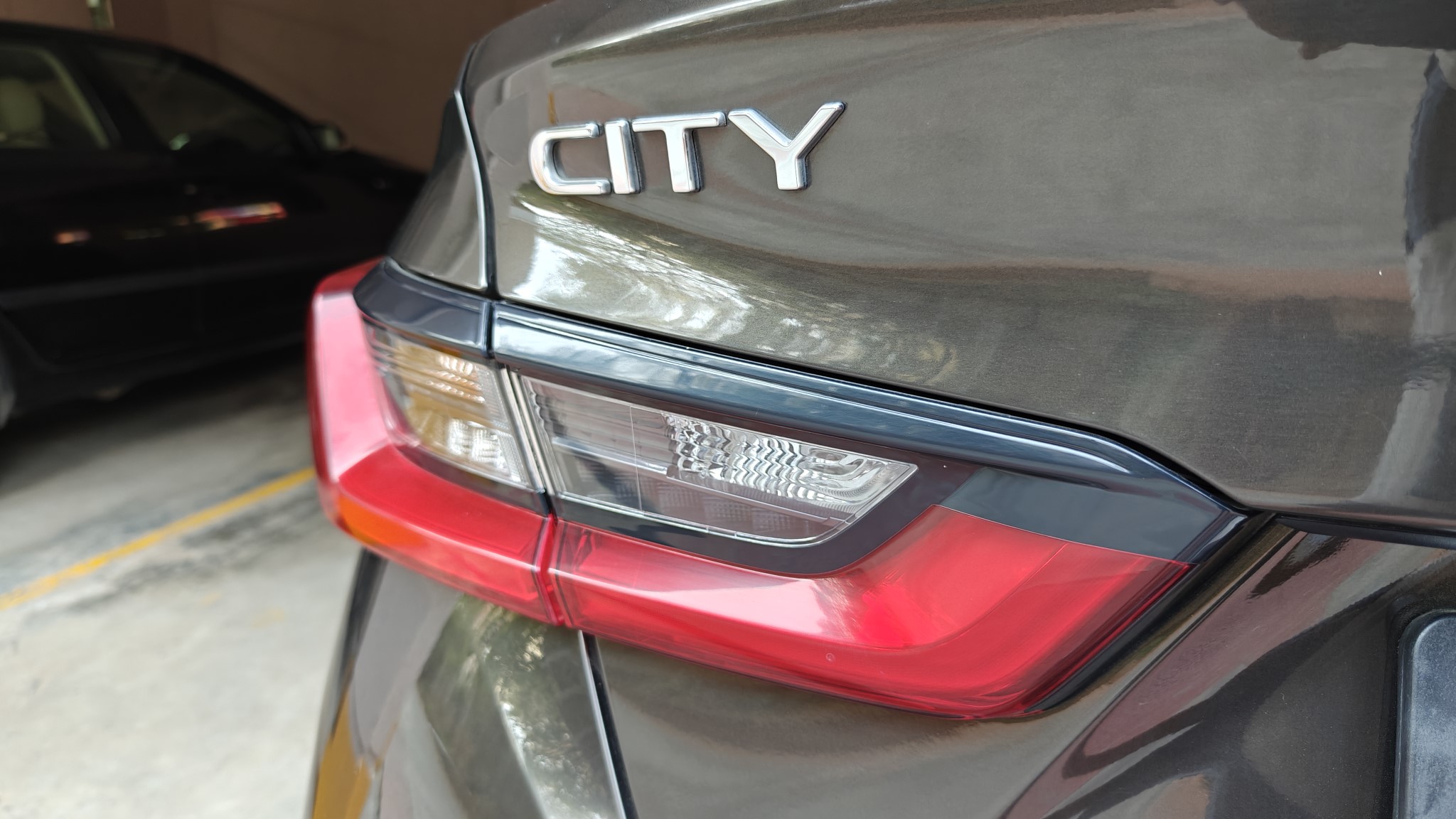
The OnePlus 12 takes outstanding photos in any lighting condition, delivering shots with plenty of detail, dynamic range, and accurate colors. There is a definite uptick in the caliber of photos over previous generations, and it is on par with the likes of the Galaxy S24 and Pixel 8 Pro in this regard. Foliage is rendered correctly without any sort of aggressive smoothening, and I really like the color balance; it is accurate with a hint of vibrancy that doesn't go overboard — they're not oversaturated by any measure.
The phone does a great job in low-light scenarios as well, managing highlights effectively to deliver plenty of detail without any noticeable grain or noise. In the photo of the Audeze MM-500, you can make out the stylized A design over the grille and the Audeze logo, and the image itself was taken when there's little to no ambient light.
The OnePlus 12 holds up well against the might of the Pixel 8 Pro in low-light situations. While the resultant images tend to be on the warmer side, you still get plenty of detail. The Pixel 8 Pro still has a slender edge as it is able to preserve intricate detail, but on the whole, there's a lot to like with the camera this year.
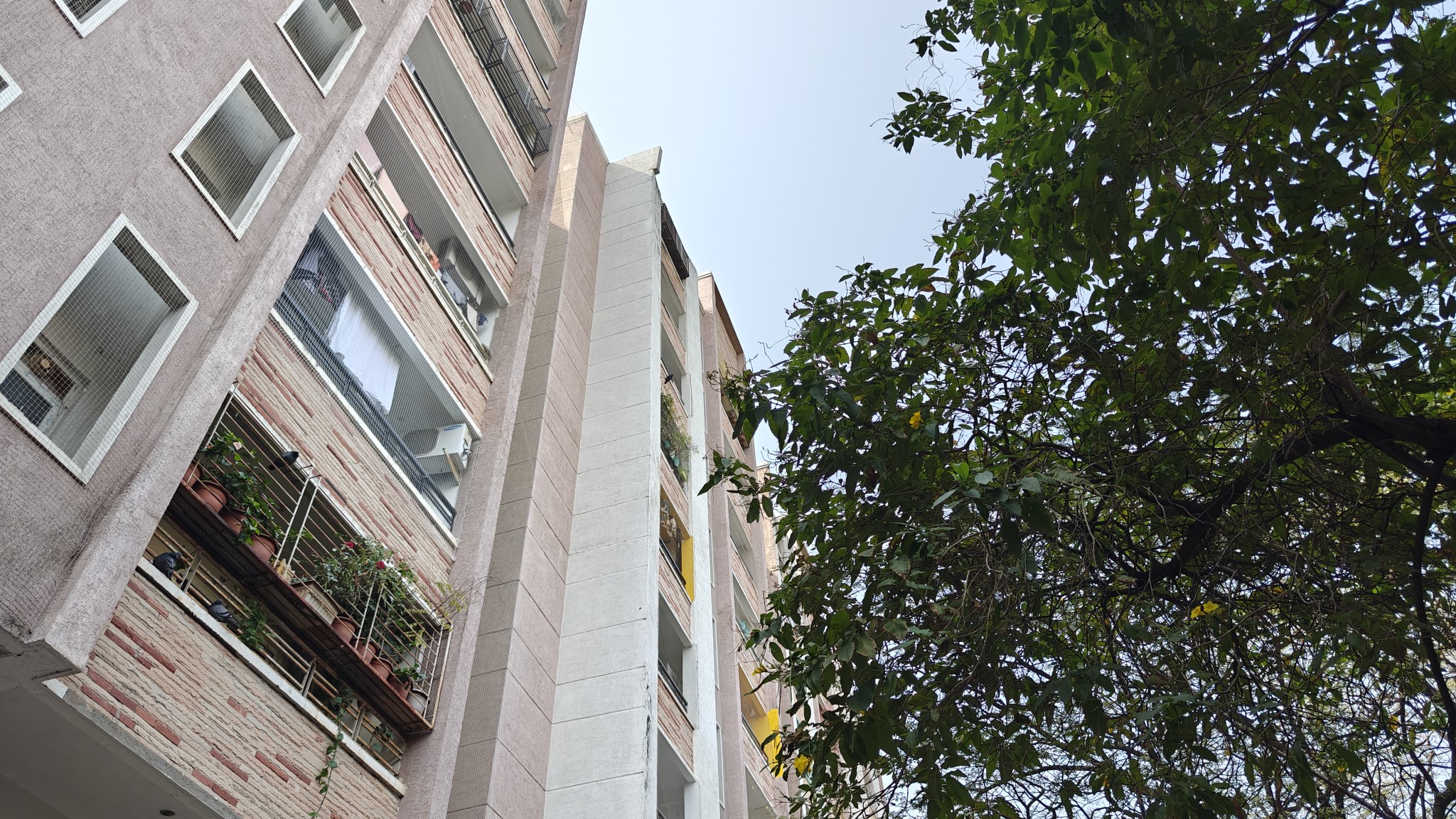
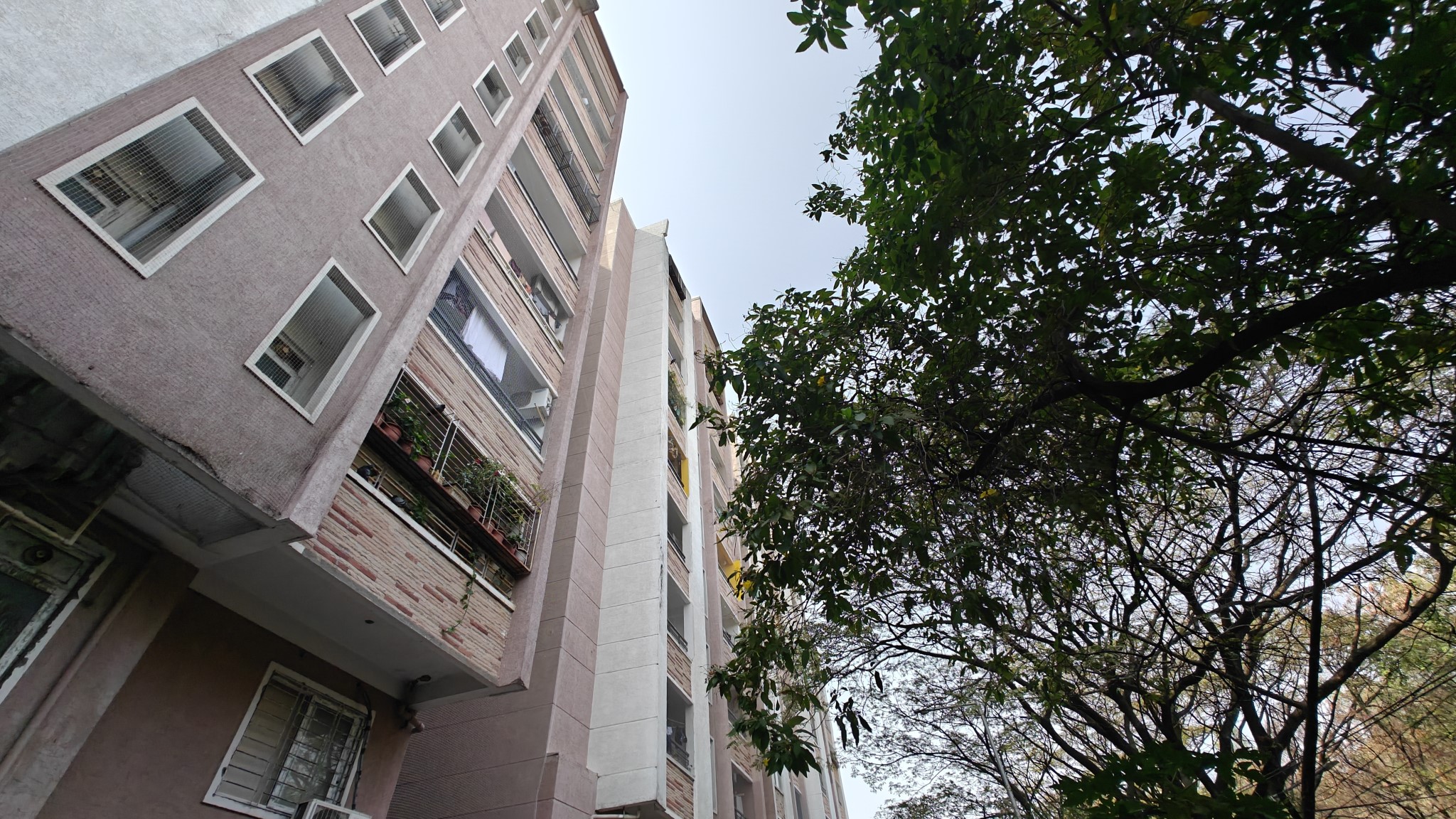
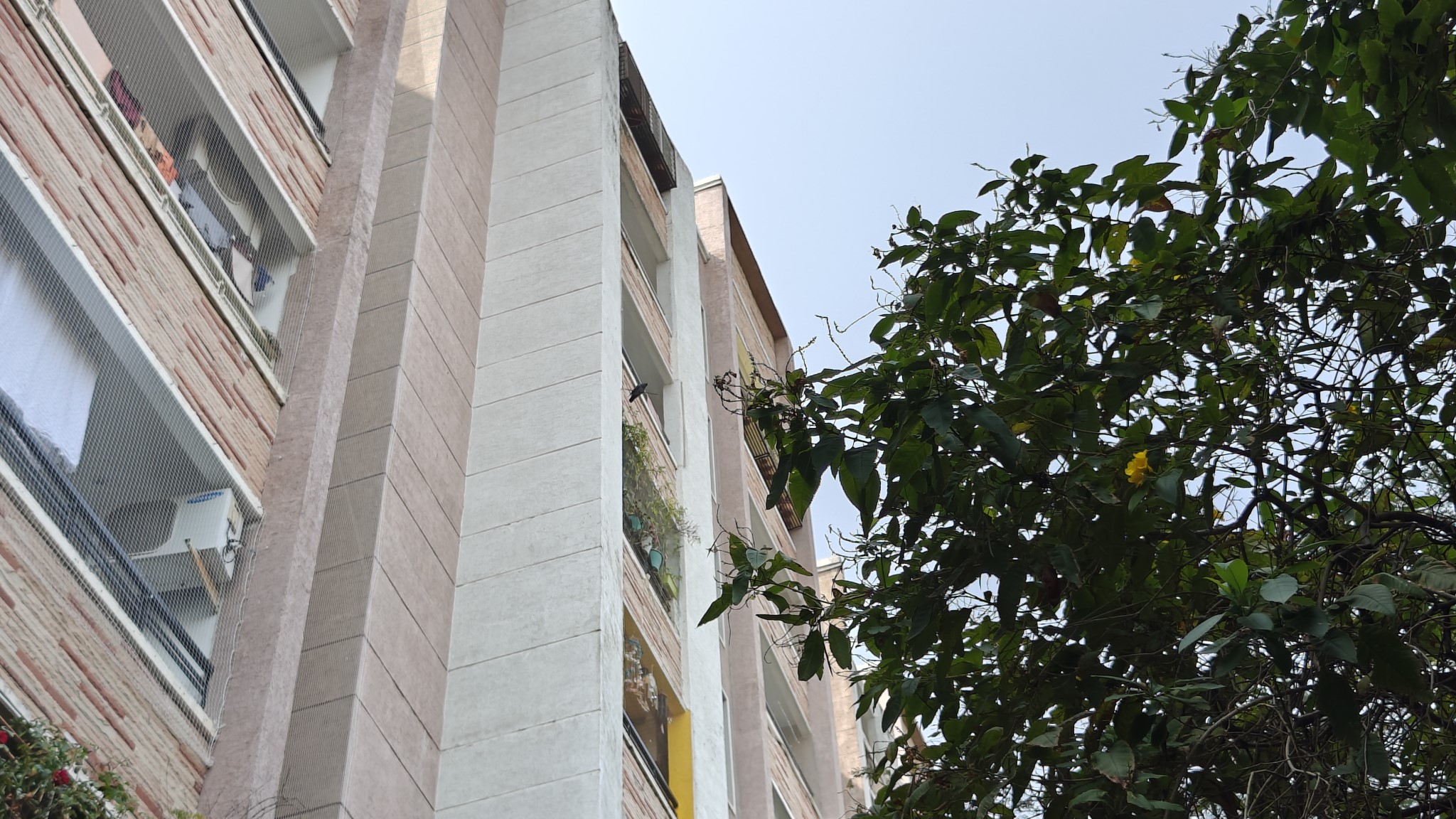
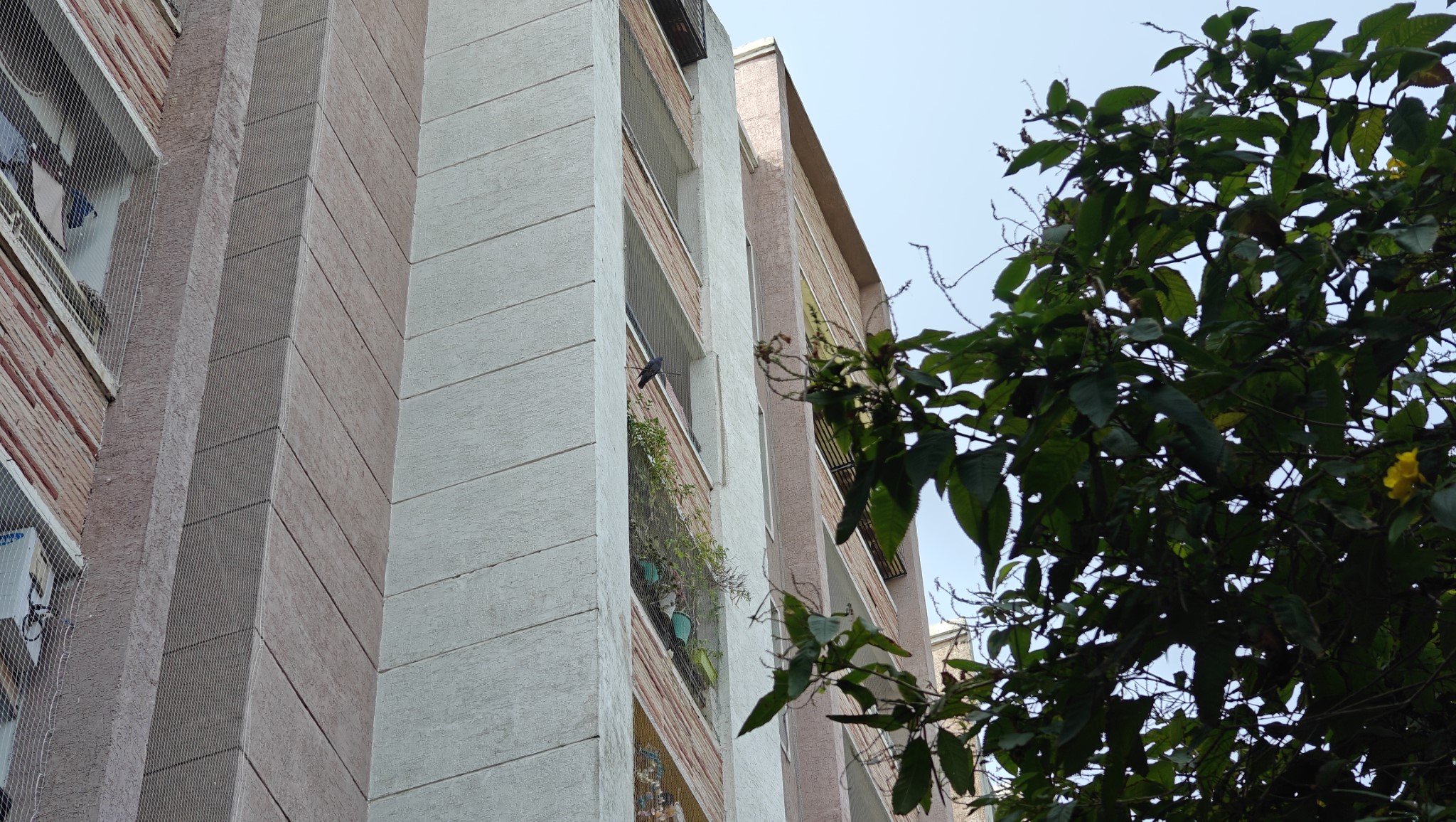
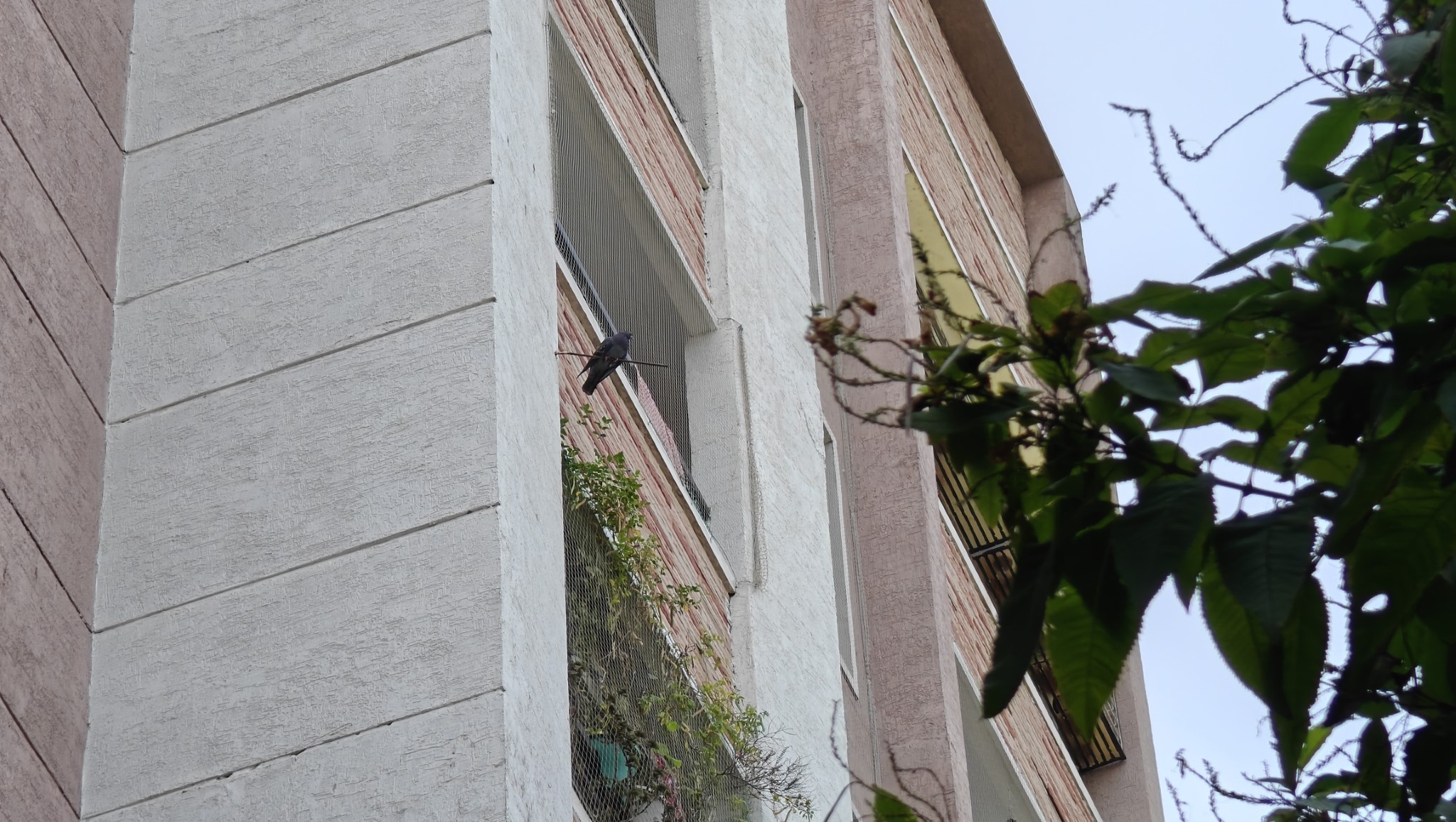
The new telephoto lens has plenty to offer as well, and photos at 3x and 6x zoom levels have a good amount of detail and clarity without any visible artifacts. The Pixel 8 Pro and Galaxy S24 Ultra still manage to take better shots up to 10x, but you're getting a strong showing here.
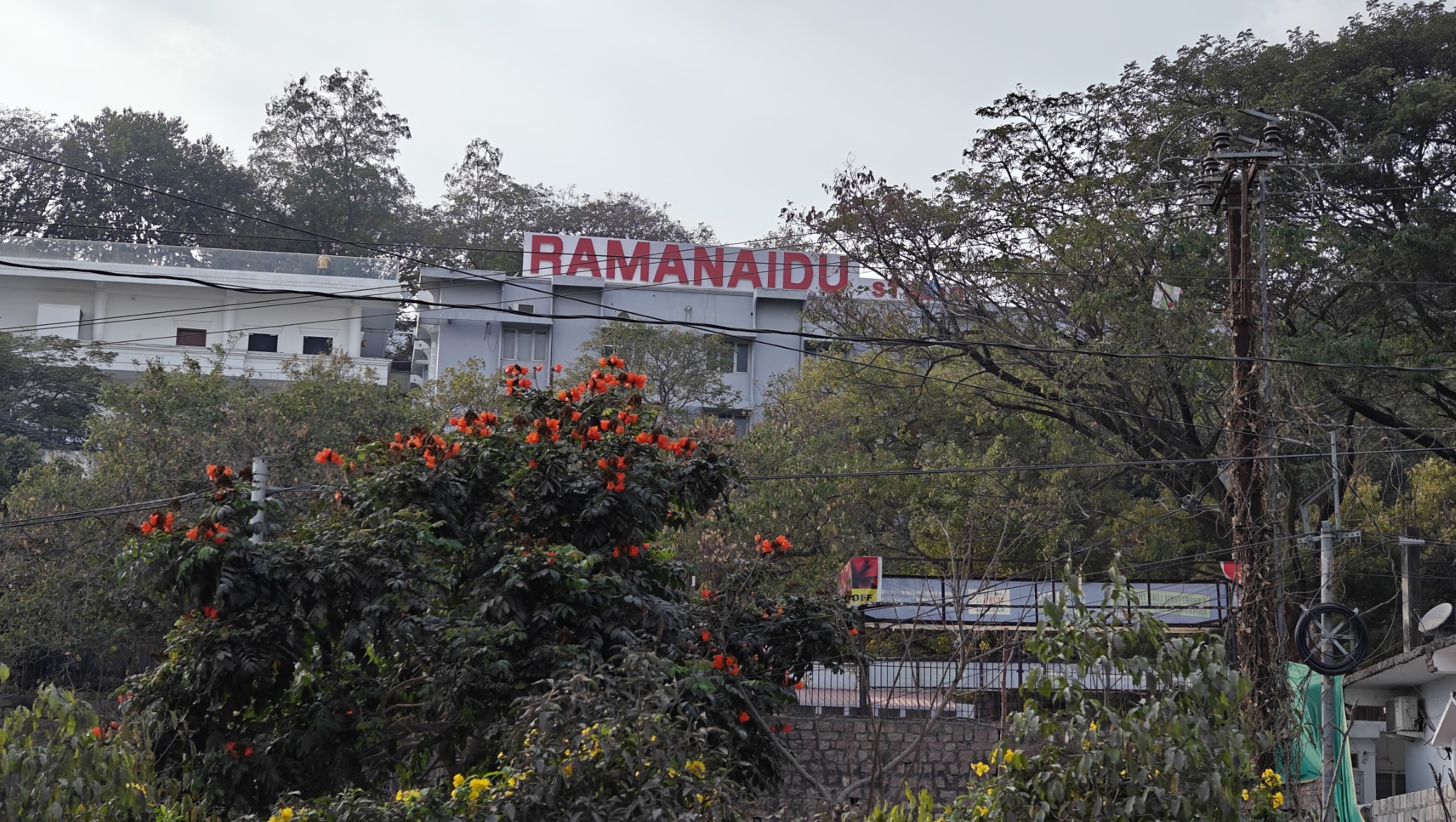
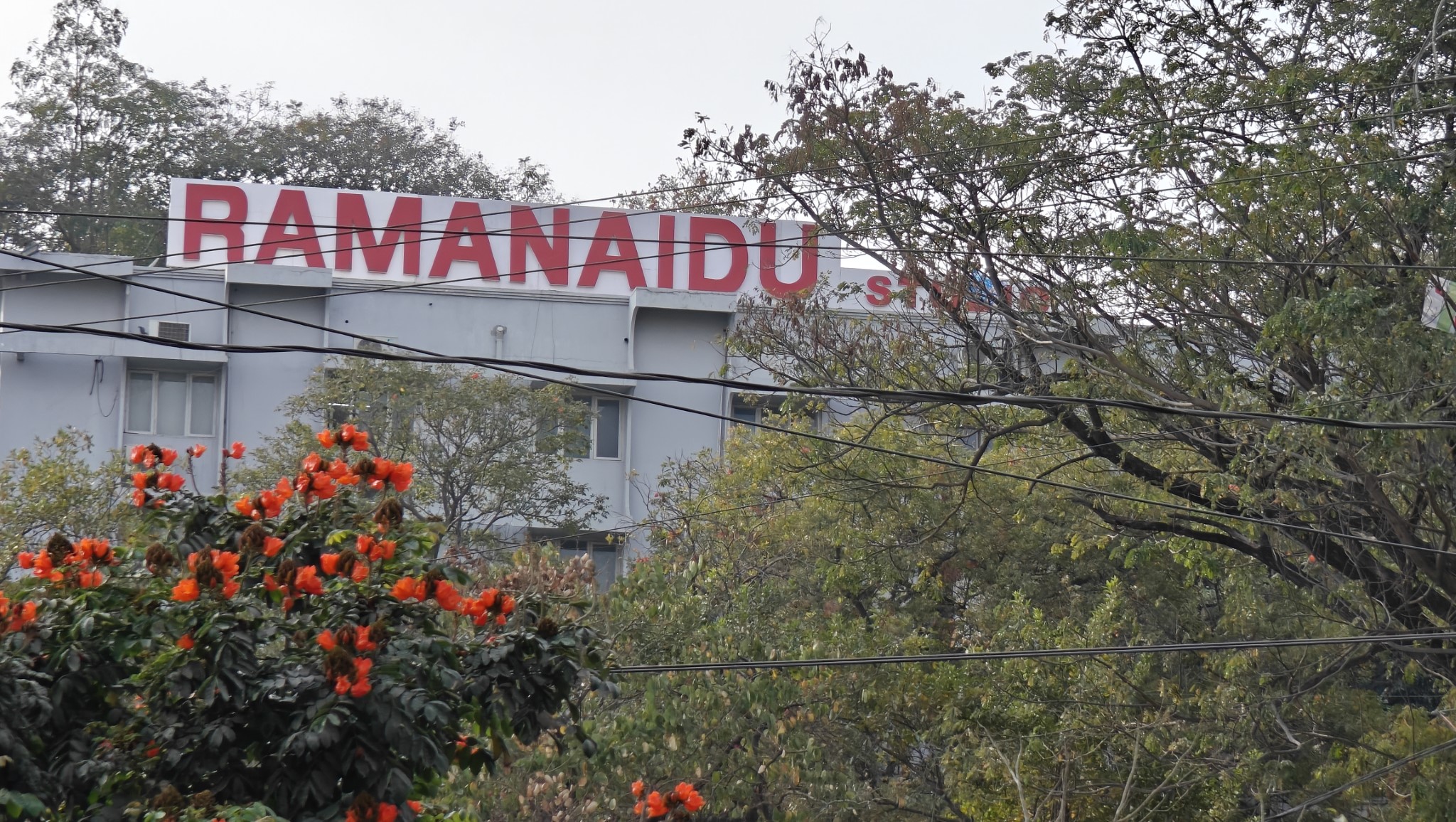

You start to see issues surface once you cross 10x, and anything beyond is going to result is an image that's so processed it isn't usable. That said, the fact that you can get decent shots at up to 10x is a big deal in and of itself.
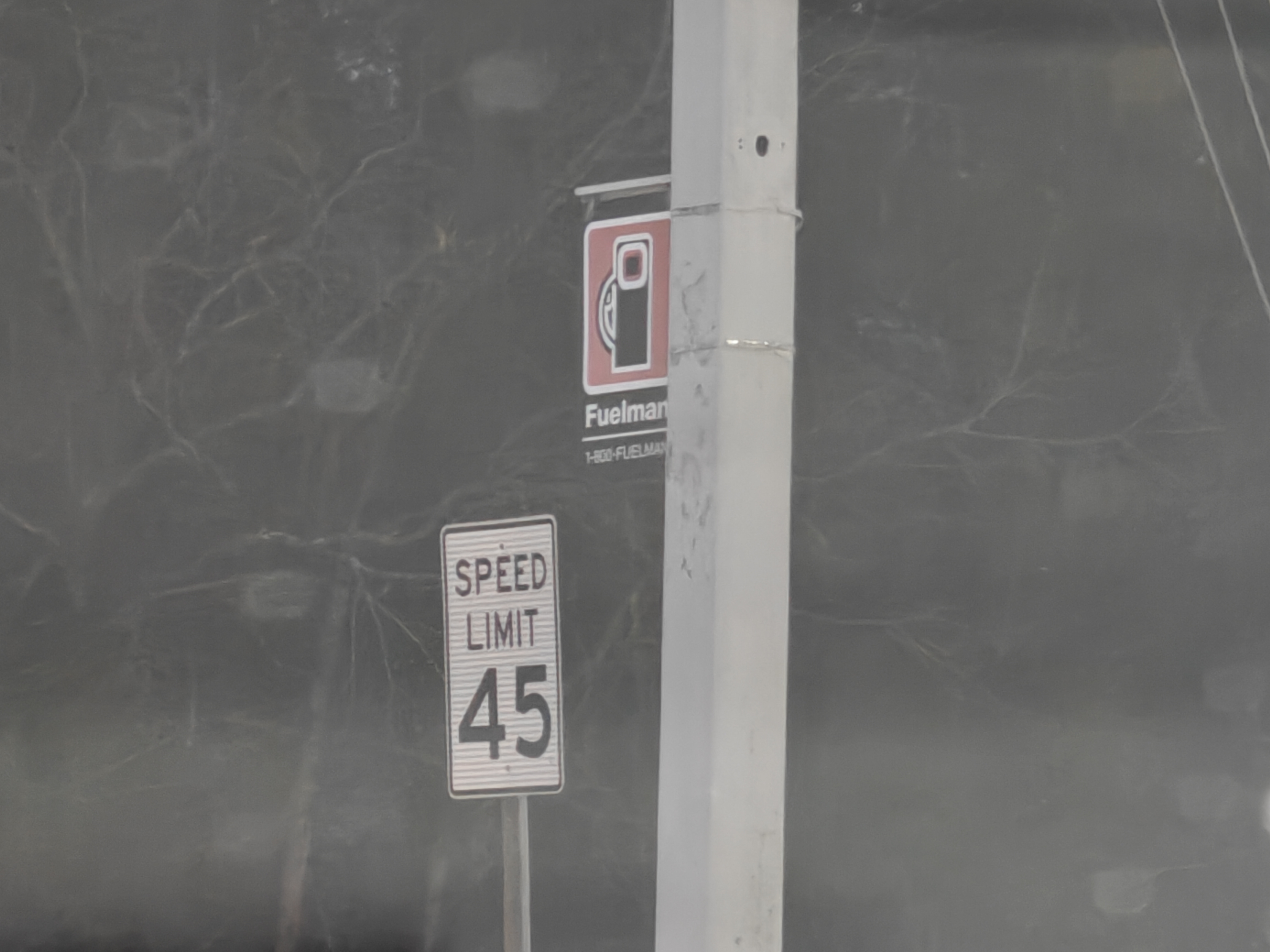
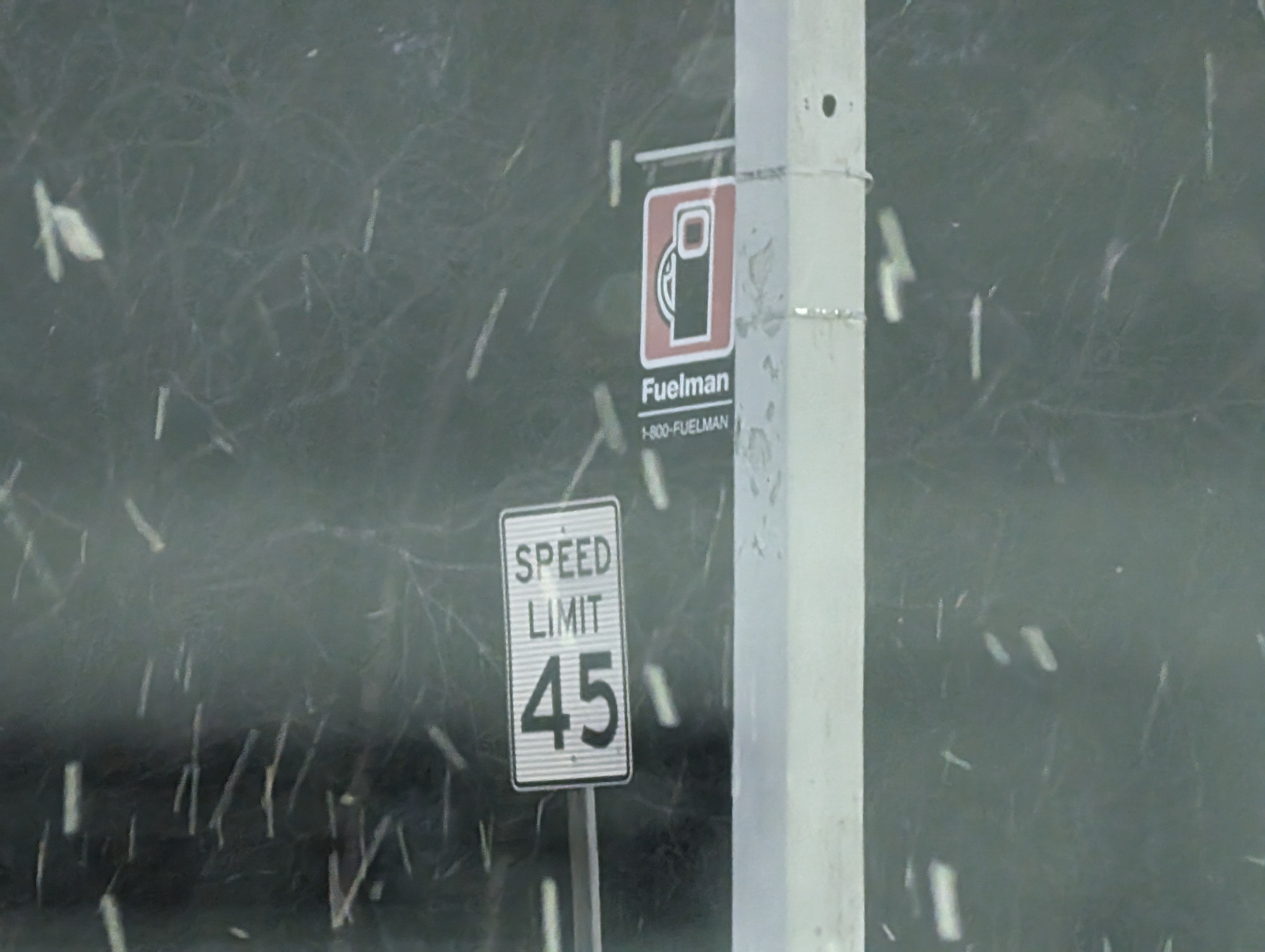
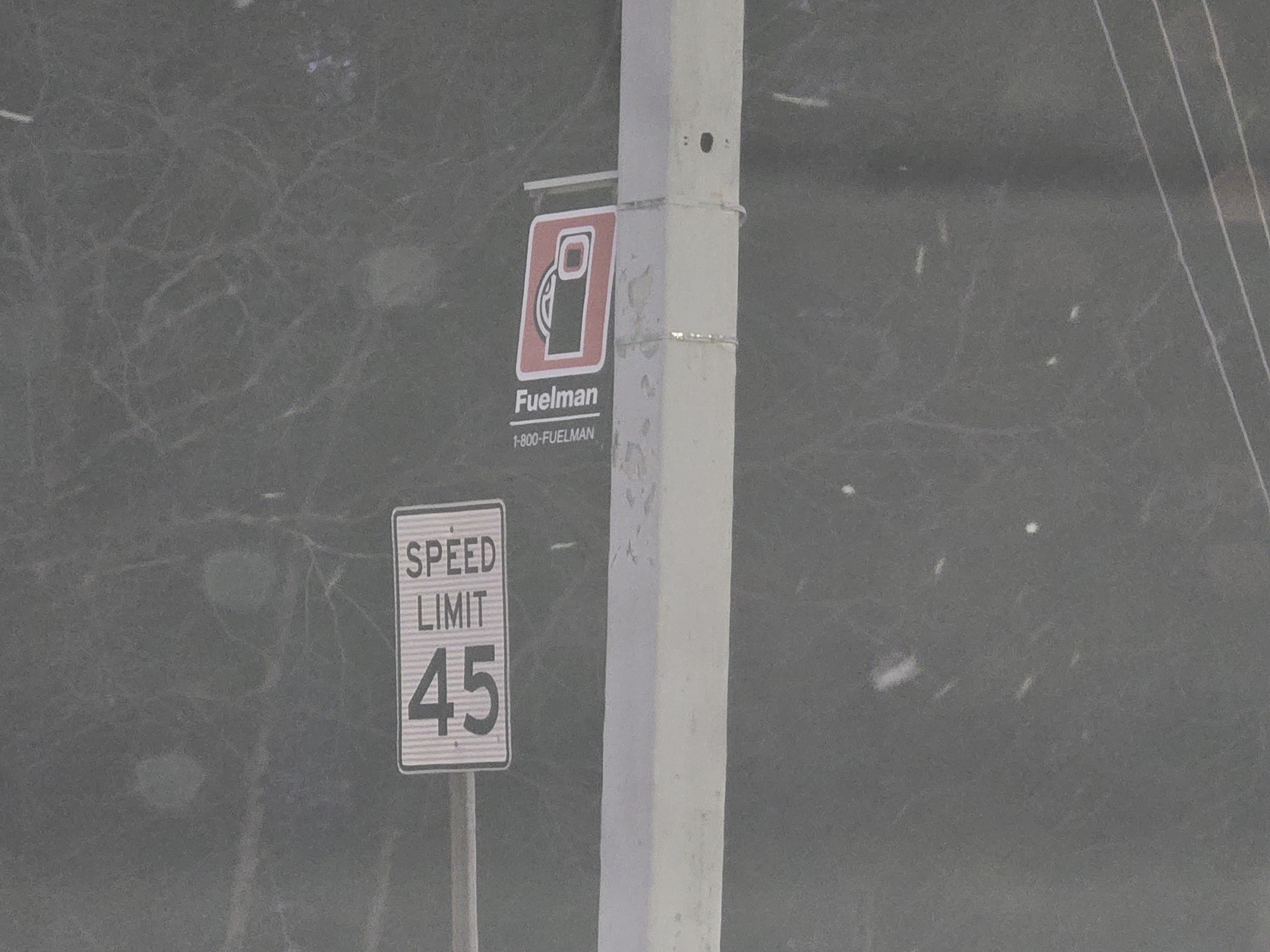
When testing the zoom lens of the OnePlus 12 against Google and Samsung's best phones, it's easy to tell just how much things have changed from last year. The OnePlus 12 manages to deliver a decent shot at 10x, and while the S24 Ultra has the outright edge — it delivers the best detail — the OnePlus 12 isn't too far behind. The only issue is that OnePlus tends to be a bit aggressive with noise reduction, and that means you lose out on detail.



It's a similar story at 5x zoom; the OnePlus 12 delivers good colors and minimal noise, but the more intricate details are smoothed over, and the Pixel 8 Pro still has a clear edge in this area.
In a similar vein, the wide-angle lens does a good job in challenging situations, and it takes great macro shots as well. OnePlus phones haven't been particularly good at video recording, but the OnePlus 12 delivers in this area, and you even get Dolby Vision. HDR videos look great when viewed on a large screen, and there's plenty of detail, good stabilization, and the phone locks in on a subject without taking too much time.
There's also a sizeable difference in portrait mode, and the phone manages to take truly outstanding shots. You get good background segmentation and a smooth blur effect — something the OnePlus 11 struggled with — and the best part is that you can choose between the 1x, 2x, and 3x lenses and easily adjust the depth of field. You also get the option to add Hasselblad filters to this mode.
Overall, OnePlus did a magnificent job with the cameras on the OnePlus 12. The phone manages to hold its own against the likes of the Pixel 8 Pro and Galaxy S24 Ultra, and that is an achievement.
OnePlus 12: Software
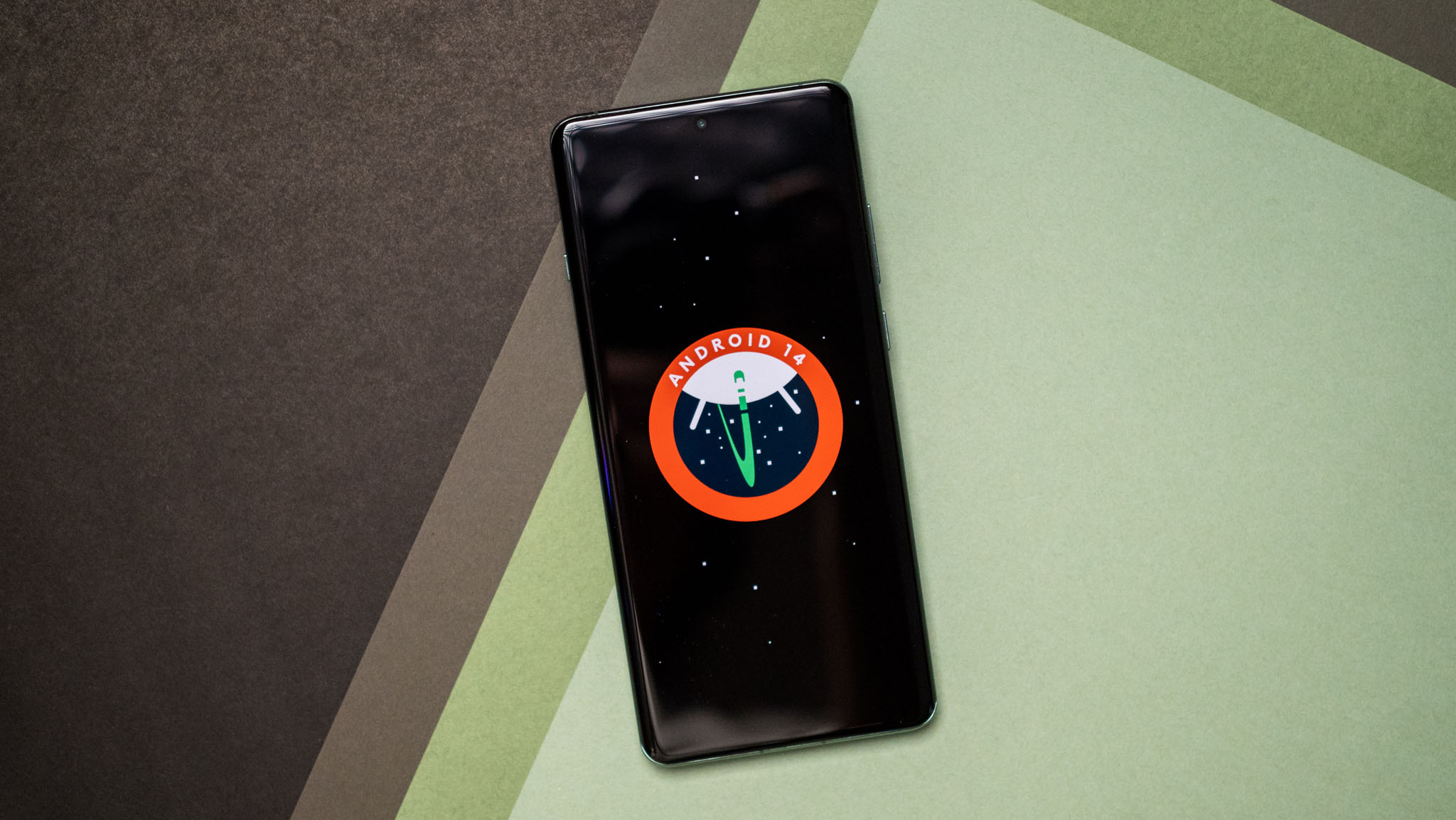
I figured Chinese manufacturers would immediately make the most of the AI-fueled madness that's going around, but they've been uncharacteristically reserved. ColorOS 14 doesn't have any AI features as such, and with the OnePlus 12 running the same interface out of the box — albeit with a different name — you don't get any new features.
OxygenOS 14 is based on Android 14, and it is a minor update that doesn't have any noteworthy additions. The interface itself is fluid and doesn't have too many bugs out of the box — a refreshing change of pace — and while you get a lot of overt styling, it looks modern. There is plenty of customizability at hand as well, and it should feel familiar if you've used a OnePlus or OPPO phone in the last two years.
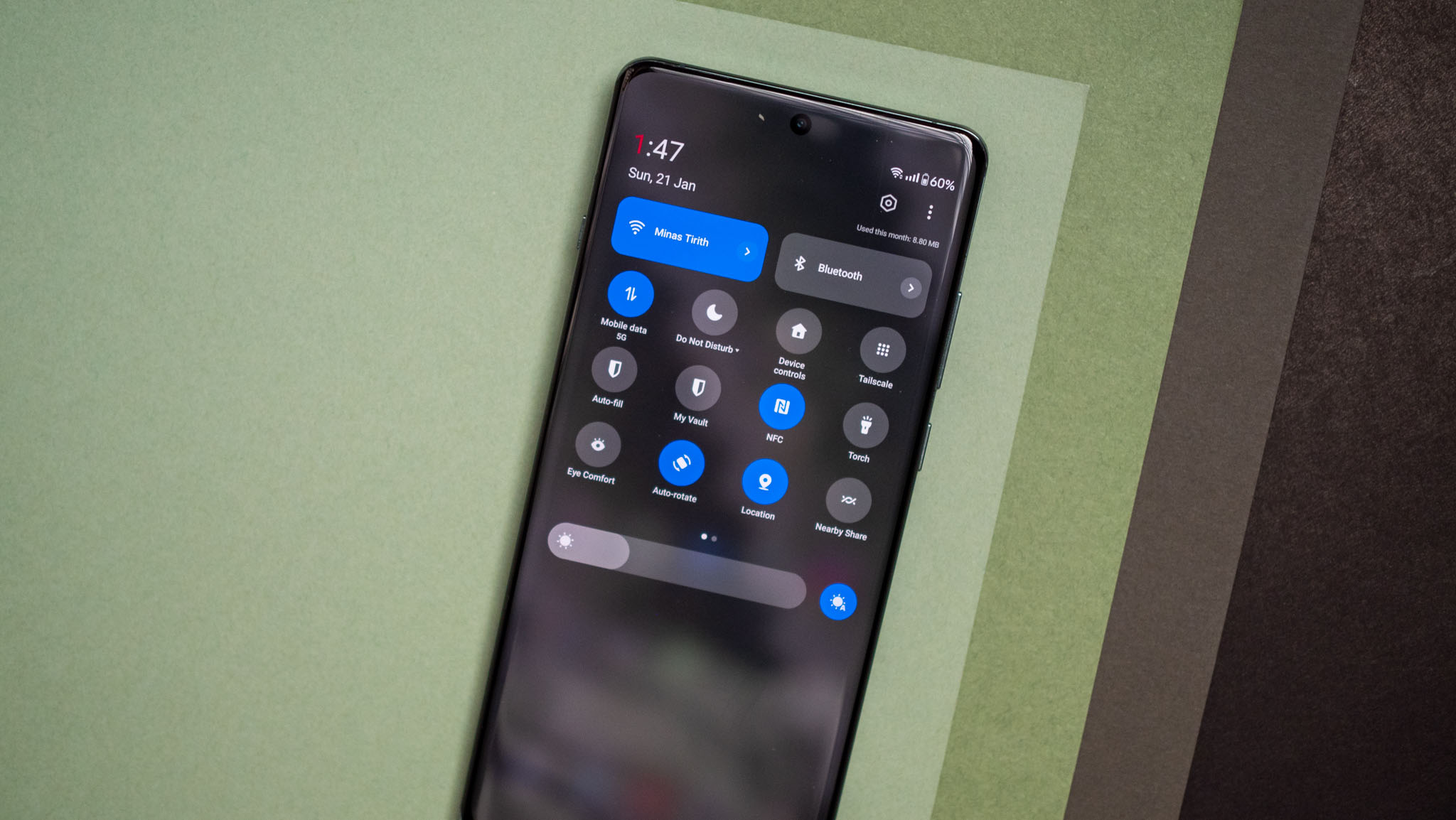
Now, to the bugs. I switch between devices on a bi-weekly basis, and I have it down to an exact science now. So imagine my consternation when I moved to the OnePlus 12 and noticed that it only installed half of my apps. I thought there was a glitch when transferring data over to the device, so I reset the phone and tried again — but no avail. So I had to go to the Play Store and manually install about a hundred or so apps; heck, migrating data to a Chinese version of ColorOS that didn't have any Google services was easier.
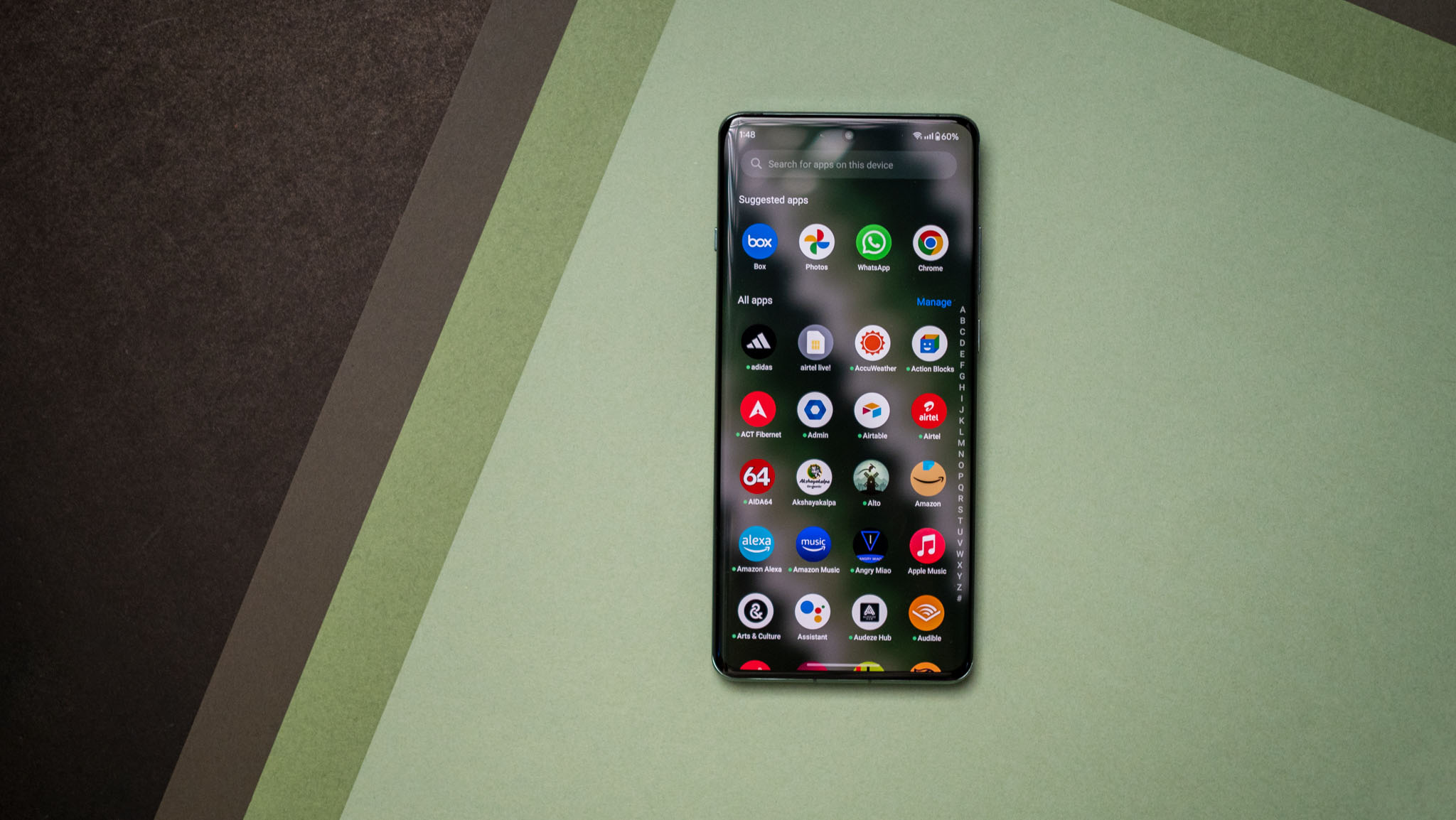
And once I had everything installed, I noticed that the sorting was awry. OxygenOS has a weird issue wherein if an app is in lower case, it doesn't follow the usual alphabetical sorting. This was the case last year as well, but I missed seeing it on the OnePlus 11 as I didn't use any apps at the time that were all in lower case.
That said, I didn't run into any stability issues this time, so I'm counting that as an overall win. Coming to software updates, the OnePlus 12 will get four years of Android OS updates and five years of security patches. Google and Samsung changed the dynamic of Android updates, and while four OS updates are still good enough, I'd like to see Chinese brands roll out the same guarantee on their devices.
OnePlus 12: The competition
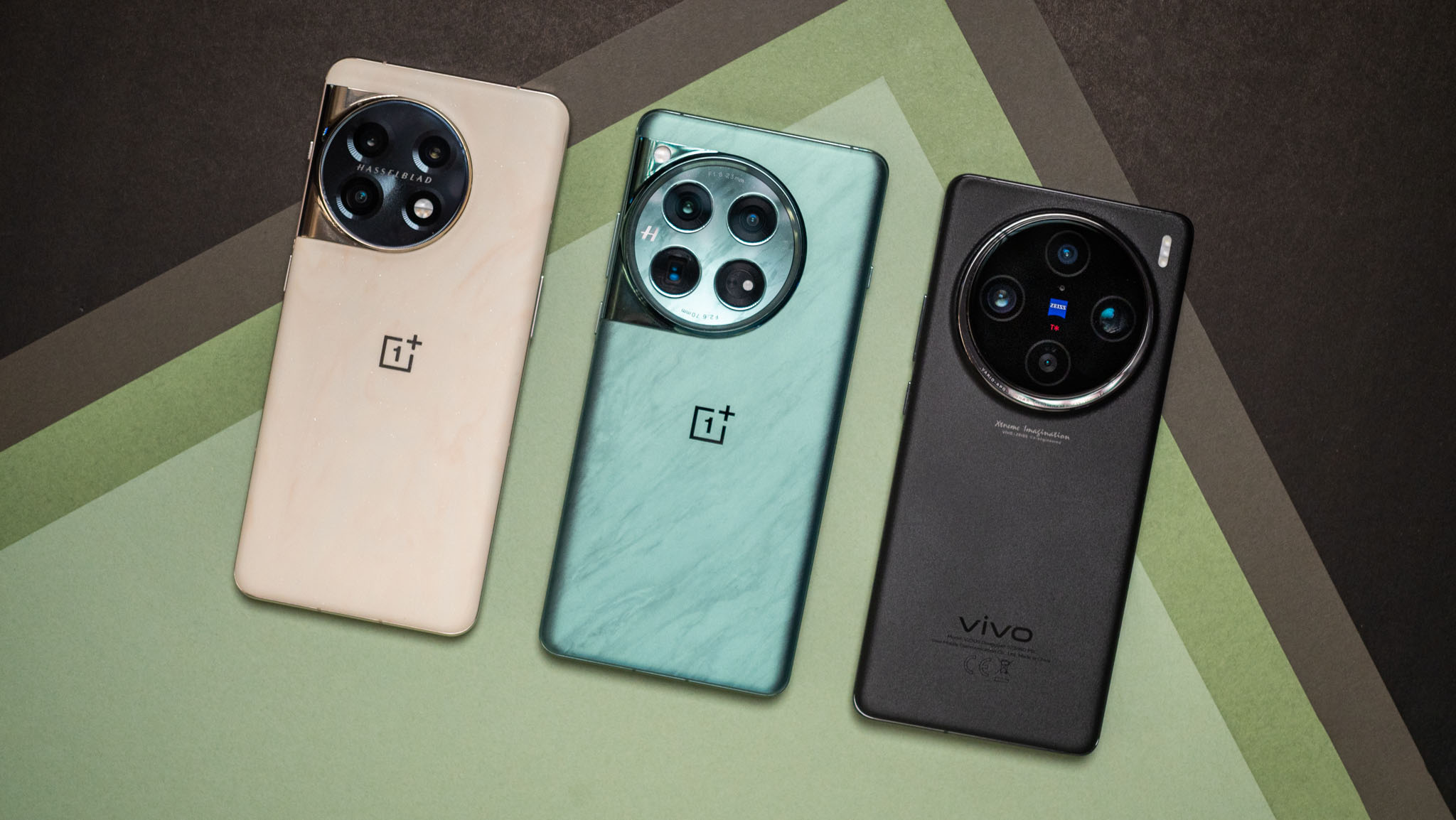
The Galaxy S24 is the obvious contender, and Samsung has a lot going on this year, particularly on the AI side of things. The phone has a 120Hz AMOLED panel with dynamic refresh, great cameras at the back, and decent battery life. That said, the interface is heavily skinned, you get plenty of bloatware out of the box, and the phone doesn't last as long as the OnePlus 12. The biggest advantage is the seven-year update guarantee, but if you're buying the phone outside the U.S. or China, you're getting the Exynos model, and we'll have to wait and see how that holds up this year.
If you like the look of the OnePlus 12 and want something similar, the OnePlus 12R is coming to global markets this year, and if history is any indication, it will be just as good. I'll have more to share on that device in just over two weeks, but for now, just know that it is a potential contender. Similarly, last year's OnePlus 11 has aged very well, and it is a viable choice — if you can get a good deal.
I like what Vivo is doing with its high-end phones, and the X100 Pro has a gorgeous design and terrific cameras at the back. It costs about the same as the OnePlus 12 in India, and the Dimensity 9300 holds its own against what Qualcomm is offering this year. You don't miss out on any of the extras either, and it will get the same number of software updates.
OnePlus 12: Should you buy it?
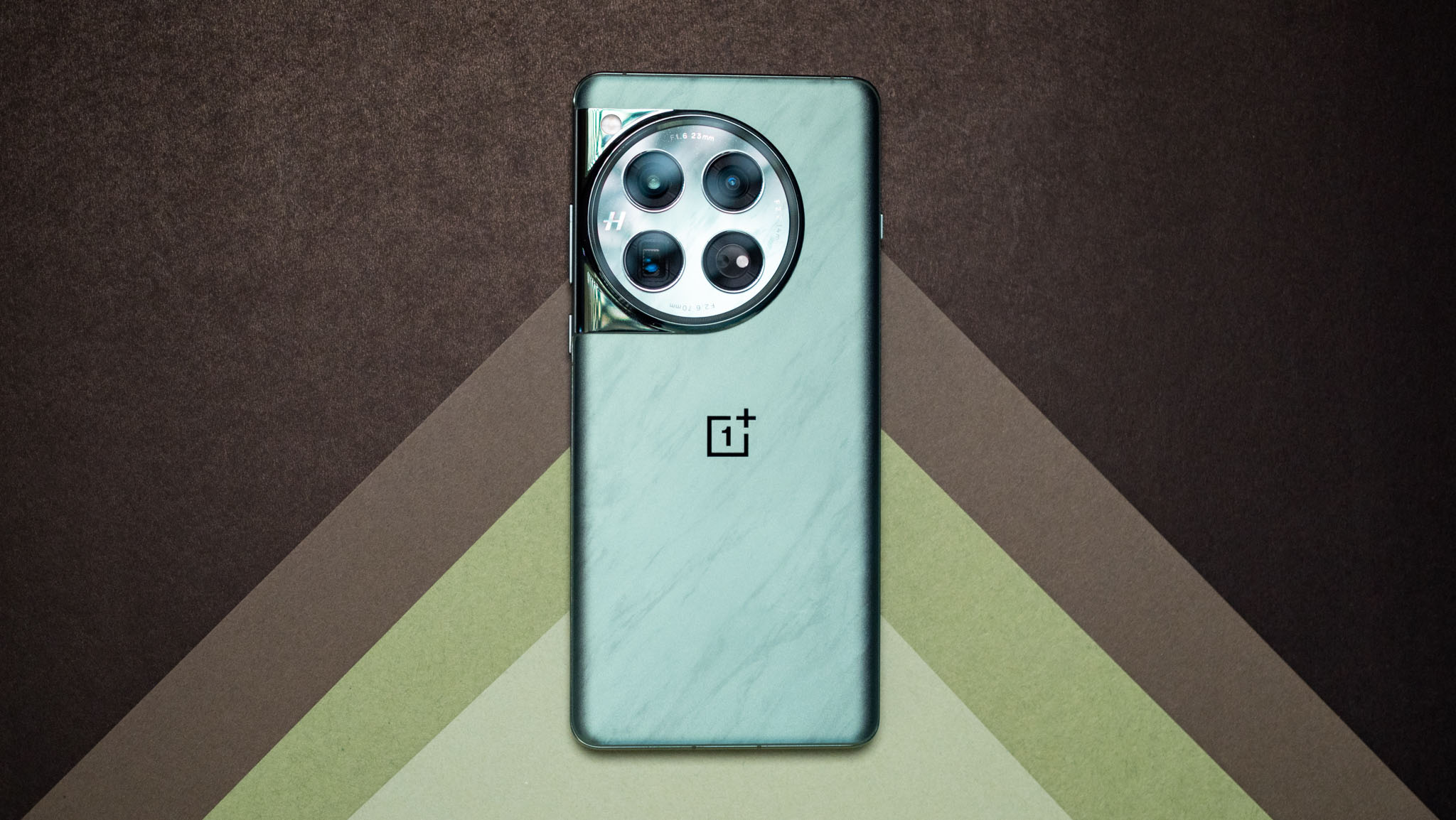
You should buy this if:
- You want one of the fastest phones available today
- You need a bright AMOLED panel that's great for watching multimedia
- You want a device with outstanding battery life
- You need ultra-fast charging tech
You shouldn't buy this if:
- You want a phone with clean software
- You need IP68 water resistance
The OnePlus 12 feels like a culmination of OnePlus's efforts over the course of the last decade; the phone has everything you could ask for in a modern flagship, and it delivers these features while still retaining a good value. I asked OnePlus why the OnePlus 12 doesn't get the Pro label, and the brand said that its users "don't care about the name of the product," and what they're actually interested in is the "experience the product can deliver and its final price."
That sums up the OnePlus 12 pretty well. I like the changes to the design this year, and the phone definitely looks the part of a flagship. OnePlus delivered meaningful upgrades across the board: the display is terrific, the battery lasts noticeably longer and now has wireless charging, and there's no shortage of power.
But it's the cameras that are particularly noteworthy this year. The OnePlus 12 manages to produce outstanding photos and videos in just about any situation, and I really think this is the biggest differentiator for the phone. Earlier OnePlus phones came close, but the OnePlus 12 delivers a camera package that can hold its own against the best in the industry, and that makes it a terrific all-round choice.







